
AUSTRALIA’S ONLY FREE FISHING & TACKLE MAGAZINE FREE HOW TO CATCH BROADBILL SLOW PITCHING NTH QLD RIGGING FOR KING GEORGE KNOW YOUR LURES PART 1 ISSUE 142 MARCH 2024

Delivering a simple, more fluid boating experience. Our latest operating system introduces redesigned charts, our fastest-ever auto-routing, and seamless integration for total control of your boat.















• 8-Strand braid • New IZANAS material • 4-times more abrasion resistance • Excellent knot strength • Two Colours Available (Island Blue & Multi-Colour) • Available 6lb to 65lb • New Coating PE technology • Available 8lb to 90lb BE A STRONG FIGHTER
YOUR WINDOW TO ADVENTURE.
6-17

Use What’s Effective
Tackle enthusiasm – and what some may call a healthy addiction for every kind of lure, hook, reel and rod – is something that affects many anglers. I for one am a tackle tragic and thankfully get to indulge my enthusiasm as my job. I buy or get sent most of the new products that hit the market and I have multiple models and brands of every lure type imaginable. I do, however, know when and where to use them and I never persevere with a product for the sake of it or because I just really want to catch a fish on it.
Every product has its time and place and you need to keep that in check. Everything that gets reviewed in Hooked Up comes to me first, and as much as I may want to use it, it often gets sent to writers in other parts of the country who can better utilise it to suit their skill set, or the conditions and species where they live.
When I go fishing I want to catch fish, that’s my first and last priority. If I think the humble pilchard is going to out-fish any other offering, that’s what I’ll use. Will a snapper eat a glide bait or a popper? Maybe, in the exact right conditions with everything going your way, but there are at least 20 other lures I’d use first that will be far more effective.
My point is this: indulge in tackle, be enthused by it to the point it consumes you, spend money you can’t afford on it, try different things out, but know when to use the right gear for the species and location. None of us get to fish enough to be out there flogging a dead horse.
Kosta Linardos.
Editor-in-Chief
PUBLISHER
Hammerhead Media Pty Ltd
EDITOR IN CHIEF
Kosta Linardos kosta@hookedup.com.au
SUB EDITOR
Ian Gilbert
ONLINE EDITOR
Adam Hewson info@hookedupmagazine.com.au
GRAPHIC DESIGNERS
Jack Carpenter, Justin Dillon

www.hookedup.com.au

OCEA JIGGER LD, A GAME-CHANGER IN PRECISION JIGGING.
This lever drag reel redefines norms with its 30% lighter rotational torque and innovative double-drag structure, maximizing control during intense fights. Boasting a 20 kg drag force and compact yet powerful design, it surpasses even larger reels. Customizable with interchangeable drag cams, the Ocea Jigger LD ensures an unmatched balance of strength and yet stays palm sized. Elevate your jigging experience with this dedicated reel for giants of the deep.


HOOKED UP MAGAZINE - MARCH 2024 - ISSUE #142 ON THE COVER: Jonah Yick with a huge broadbill caught on the continental shelf off Tasmania.
HOOKED UP MAGAZINE - MARCH 2024 - ISSUE #142 Find Us Online hookedup.com.au
OCEA JIGGER LD 2500HG | OCEA JIGGER LD 2500MG - RRP FROM $1,049.00 Shimano.Fish shimano.fish ShimanoAustralia ShimanoAustralia fish.shimano.com/en-AU Check your local Shimano Stockists. THE LATEST SHIMANO PRODUCT VIDEOS SCAN TO WATCH
FISHING & TACKLE NEWS
DREAM DROPS
FOR KING GEORGE
HUNTING GLADIUS
YOUR LURES PART 1 CONTENTS
18-25 THREE
26-29 RIGS
30-37
38-47 KNOW
Hewson,
Sammy
Colby
ADVERTISING info@hookedup.com.au
CONTRIBUTORS Adam
Dean Norbiato, Jonah Yick,
Leys,
Lesko, David Sloane
BAIT BREATH ET SHAD 4.3IN
Bait Breath are renowned for their intricate Japanese made soft plastics and how effective they are at catching fish. One of their most popular shapes here in Australia is the E.T. shad. A slim profile paddle tail that comes in a great range of colours, features a dual-pour finish and is impregnated with scent, luminescence and UV. The ribbed body tapers down to a slim tail with a large paddle tail that provides a realistic action with strong vibration. New for 2024 is the 4.3in size, it features all the same fish enticing characteristics of the original 2.8in size but in a larger profile. This size is perfect for flathead, jacks, mulloway, snapper and more.
gladiatortackle.com.au
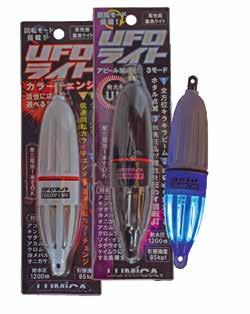
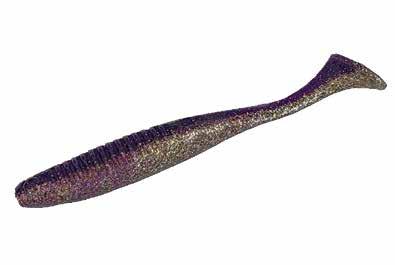

LUMICA UFO DEEPWATER LIGHTS
Lumica Japan are the developers and inventors of the Chemical Light Stick. The UFO range is the top of the range model in their superb range of Deepwater Lights. The UFO is depth tested to an impressive 1200mts and is pressure rated to 85kg. The UFO comes in 3 different versions- the Multi which offers 5 different light functions, by simply turning it at the base it can change from Green to Blue to Red to Multi Strobe in 2 different flash functions. The UV and Blue models offer 3 different light functions so you can alter and change your colour schemes or strobe functions to your own desired effect on each of the models. The UFO requires 1 x AA Alkaline battery. The Deepwater Lights will be highly effective for anglers targeting Swordfish, Hapuka, Trevalla, Tasmanian Trumpeter and all deepwater species and help attract and bring them into your baits. jurofishing.com
SHIMANO TALAVERA TYPE J
Talavera Type J are a series of jigging rods precision engineered for diverse fishing scenarios. These rods offer rapid loading, seamless tempo synchronization, and aggressive jig pitching. Choose from overhead or spinning models, with a power spectrum from Light to Medium Heavy. Crafted with High-Density EVA for a durable grip and SeaGuide Zirconia guides for impeccable line management. Elevate your jigging experience and land your next big catch. RRP: $149 shimanofish.com.au


AMEGARI DZANGA 140
The new Amegari Dzanga 140 popper is the latest lure in the S & P series. Available in 6 colours, measuring 140mm and weighing 42g they are a great addition to your tuna and kingfish arsenal. Fitted with strong BKK hooks, wire through body and a large cupped face that produces an impressive bubble trail. ejtodd.com.au


FISHCRAFT DR FLEX
Dr Flex utilises a unique titanium backbone inside a durable TPE body. This revolutionary design results in an extremely resilient lure that casts further than any similar sized bent minnow currently on the market. Distance equals more fish when using surface lures like Dr Flex. The vibrant action of Dr Flex must be seen to be believed, the slightest twitch of the rod tip can induce crashing strikes from a wide range of species such as dusky flathead, Australian bass, whiting, yellowfin bream, black bream, tailor, saratoga, barramundi and estuary perch to name a few. The Fishcraft Dr Flex comes in a range of custom finishes that will cover all potential conditions in both salt & freshwater and features super durable TPE construction, titanium backbone, stainless steel split rings and chemically sharpened hooks. Each Fishcraft lure is tuned to swim straight out of the box. samaki.com.au
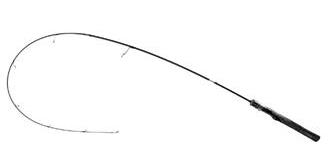
INSALT FINESSE EXPLORER
The Insalt Finesse Explorer is a rod like no other, affectionally referred to as the “Noodle Rod” thanks to its almost unbreakable action, this 5ft 6in practically unbreakable solid carbon blank is unique, so much to fun to use and highly effective in a host of different environments. Don’t let the light rating fool you, while the Finesse Explorer is perfect for trout, jungle perch, bream and flathead, it can also be used as a challenging rod for queenfish, snapper or even mahi mahi. This rod can handle much heavier braided lines and cast weights than the recommended amounts. It’s available in spin and overhead and rated 1-2kg with a cast weight of 2-8g.
insaltlures.com.au
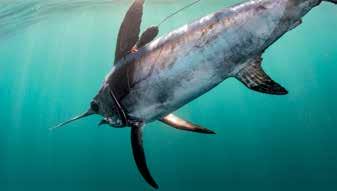
HUK PURSUIT HOODIE
The Huk Pursuit Vented Hoodie is packed with Huk Performance Technology to handle the elements on the water. This lightweight crew neck shirt with mesh vented sides is an ideal layer on cooler days and perfectly worn by itself when it’s hot. With +UPF 50 to block UVA and UVB rays for allday sun protection, stain-resistant, anti-microbial treatments, and superior breathability: the Pursuit shirt is a must-have for any anglers arsenal.
jmgillies.com.au


VEXED MICRO MEAT
Vexed has now developed the Micro Meat Hybrid as a micro version of the Bottom Meat for smaller fish species from boat or shore. This hybrid jig has been designed with whiting in mind to either use on its own, or on the bottom of a paternoster rig as a Fish Catching Sinker. 70% or more whiting are caught on the bottom dropper hook of a traditional paternoster rig. During Vexed testing sessions for sand whiting and king george whiting, they claim to have caught more fish on the Micro Meat Hybrid fished as the sinker than they did on the bottom dropper hook. By using the Micro Meat Hybrid as the sinker, you now have two prime fish catchers down on the seafloor. These have been rigged with twin assist hooks that have been tied using super strong and sticky sharp BKK hooks and a carefully selected mix of glow/UV flash fibre and rubber. Micro Meat is available in a large range of weights from 3.5gm – 130gm, and 10 colours, and designed to be used with small strips of fish or squid as bait for species including whiting, bream, flathead and inshore snapper. The Micro Meat hybrid doubles as a “Micro Tai Rubber” style jig without the addition of bait. It can be cast and twitched through structure, hopped across sand flats or dropped and jigged on bait schools and offshore reefs in water depths up to 100m.
vexedfishing.com.au
AL MCGLASHAN’S FISH FOREVER
Al McGlashan’s new documentary series, Fish Forever, highlights the challenges faced by oceans and fisheries globally. Despite witnessing alarming changes, the show focuses on hope, emphasizing collaboration and learning. Al, along with his partner Auds and son Coops, embarks on a journey deploying research tags into large fish, facing adversities like rough seas and technical issues. The series captures breathtaking moments in diverse Australian locations, from suburban Sydney to the deepest canyons. Premiering on Channel Nine at 1 pm on Sunday, March 17th, the show aims to unveil the mysteries of the oceans’ most valuable fish.
almcglashan.com
WWW.HOOKEDUP.COM.AU 7 MARCH 2024 | ISSUE 142
FISHING & BOATING NEWS FISHING & BOATING NEWS
WWW.HOOKEDUP.COM.AU 6 MARCH 2024 | ISSUE 142
CHEF’S CHOICE ELECTRIC PORTABLE SHARPENER
Chef’sChoice brings new technology to knife sharpening introducing a series rechargeable portable DC electric knife sharpeners in three models. An integrated lithium battery allows for compact, cordless sharpening and is easily rechargeable by USB-C. It still has all the sharpening power Chef’sChoice is known for, now with the portability to take anywhere. Compact by design, this professional sharpener uses advanced technology to sharpen both straight edge and serrated, 15 and 20 degree knives. Highly precise knife guides automatically position and stabilize the knife as you sharpen for fast, foolproof results. The first stage sharpens 15 degree knives, and the second stage sharpens 20 degree knives. In the last stage, patented stropping disks create an unparalleled polished finish to both degrees of knives. This new rechargeable electric knife sharpener is covered by Chef’sChoice one-year limited warranty.
tacspo.com.au




HAYABUSA WHITING RIGS
Hayabusa Whiting rigs are crafted with precision and expertise using high quality Japanese made components from Hayabusa. These rigs are engineered for unparalleled performance in capturing both King George whiting and yellowfin whiting. Fitted with Mutsu circle hooks (MUT183) with a Nickel Black finish, these rigs greatly improve your strike rate. Each hook features a flasher and a lumo bead making these rigs perfect for deep and dirty water. Each rig boasts two meticulously rigged hooks, utilizing high-quality Japanese fluorocarbon leader that ensures durability and strength in every fishing expedition. Packaged in sets of two, the Hayabusa Whiting rigs allow for ease of use and meticulously tied rigs in a range of colours. Available in hook size 2 and 4.
vivafishing.com.au
ST.CROIX LEGEND SURF SERIES RODS
Legend Surf leverages the absolute in latest design and technology advancements to provide extraordinary performance. The Legend Surf feature the most advanced blank technology offering the SCV carbon blanks with IPC, ART, TET and FRS technologies. They come with a Fuji DPS deluxe reel seat with a custom handle configuration that features a custom neoprene handle that provides comfort and durability. The positive grip also improves in the wet. The guide train features only the finest components offered with Fuji® K-Series KW tangle free surf guides with SiC rings and titanium frames for unrivalled, 100% corrosion-proof performance. The two-piece models feature an off-set, slim profile ferrule that provides the performance of a one-piece rod. These rods are handcrafted in the U.S.A. and offer a 15-year Unconditional Warranty. These rods offer the pinnacle of rods for use on the surf or rock platforms across the country and are a pleasure to use.
jurofishing.com
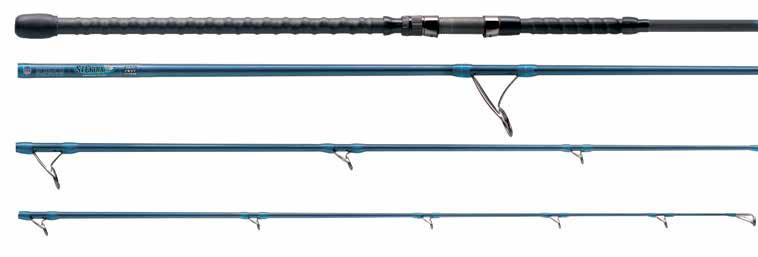
VEXED BUCKABOU
The traditional Bucktail and Marabou Jig may not look very technical or blingy, but for many species this lure option will simply out fish everything else. Old School Buck Tail Jigs have been the go-to lure choice for chasing a number of species over the years, but unless you want a filthy cheap option with a less than par hook, then you have to tie your own. Not anymore! Vexed has carefully selected a special blend of durable luminescent and UV fibres with a touch of flash and even a lashing of rubber in some options. These are all tied on Vexed Buckabou Jig Heads which are built using a strong chemically sharpened cutting point hook. Buckabou Jigs come in a range of sizes from 2.5gm to 28gm and are ideal for a range of species including flathead, bream, salmon, trevally, queenfish, herring, mackerel and deep-sea racing mullet.
vexedfishing.com.au

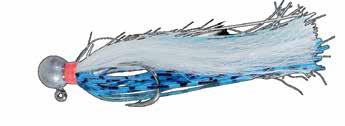
MURASAME BREAM X
Designed by Viva Fishing’s Pro Staff angler Caine Goward, the Murasame Bream X is the perfect tool for anglers looking to tackle bream, trout, yellowbelly, flathead and more with ease. The Bream X is a 7ft 7in two-piece rod rated 2-6lb with a max cast weight of 1-14g. Its ultra-light weight of just 93g makes it incredibly easy to handle, while its low-end strength, crisp feel and responsiveness really connect you to what your lure is doing, allowing you to fight the fish more efficiently. Crafted from high-quality materials, the Murasame Bream X features a Toray Carbon blank, which is known for its strength and sensitivity. It also comes equipped with Fuji K guides, which help to reduce friction and improve casting distance. The rods 3K Twill Weave woven cloth wrap enhances its durability and strength, while its TVSTK reel seat, with dual side and front finger touch-sensitive features, ensures a comfortable and secure grip.
vivafishing.com.au
YO-ZURI H.D. CARBON FC LEADER
Yo-Zuri H.D. Carbon Disappearing Pink Leader is a high-quality Japanese 100% fluorocarbon leader made in Yo-Zuri’s private line factory in Fukuoka, Japan. Made with the finest raw materials and put through their exclusive extrusion process, the result is a well-rounded fluorocarbon that is manageable and easy to tie, yet extremely strong and abrasion resistant. It is a high molecular weight fluorocarbon that features excellent knot, shock and overall strength. Virtually invisible in the water as red is the first colour to disappear in the water column and pink being the lightest shade of red, it can disappear at a quicker rate. Available in an extensive range of sizes from 2lb all the way up to 300lb.
tacspo.com.au
MOLIX RT SHAD 9 INCH
The Molix 9” Real Thing Shad is that latest addition to the RT Shad range which now includes 9in, 7in, 5.5in, 4.5in and 3.5in. The 9in is a far bigger profile than the 7in even though it is only 2in longer. It’s ideal for throwing to big barra, jewfish and cod. Its soft body and excellent body roll can prove the difference when conditions are tough.
ejtodd.com.au


HUK ICON X
The Huk ICON X Hoodie is the most technically advanced performance fishing shirt designed for hardcore anglers. This breathable material spreads moisture over a larger surface area, creating a rapid drying effect that cools the body after coming into contact with perspiration. The synthetic fibers allow air to pass through the shirt and contain a hydrophobic coating that transports sweat to drier areas, away from the skin.100% Polyester. 50+ UPF. Back Ventilation.
jmgillies.com.au
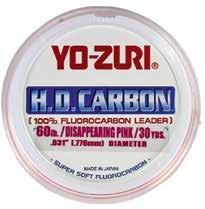
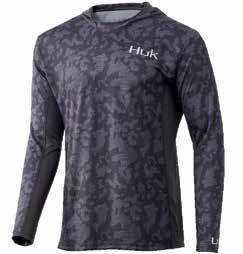
WWW.HOOKEDUP.COM.AU 9 MARCH 2024 | ISSUE 142
FISHING & BOATING NEWS FISHING & BOATING NEWS WWW.HOOKEDUP.COM.AU 8 MARCH 2024 | ISSUE 142
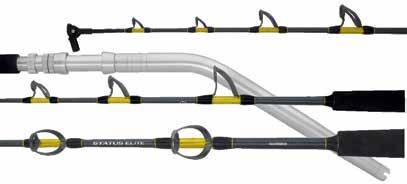
SHIMANO STATUS ELITE
The Status Elite Deep Drop range of rods from Shimano, are a fusion of Shimano’s Status bent butt and the timeless Tiagra game rod. Purpose-built for discerning offshore fishermen, this series offers a competitively priced, yet high-performance solution for targeting a diverse array of fish using electric reels. Crafted with a power carbon composite blank that seamlessly blends E-Glass and graphite, the Status Elite Deep Drop rods deliver an exceptional combination of strength and sensitivity. Boasting a substantial hoop strength and durability, these rods maintain a comfortable bending curve, ensuring optimal performance during prolonged offshore adventures. shimanofish.com.au
AUSTRALIAN INTERNATIONAL BILLFISH TOURNAMENT HITS TASMANIA
For the first time in its remarkable 61-year history, the Australian International Billfish Tournament (AIBT) is heading to Tasmania, and it’s going to be a game-changer. World famous for its remarkable broadbill swordfish fishery and with a forecast of warm water this season should see a solid marlin bite, making for a sensational event. The naming rights sponsor for this event is Meridian Tackle. They are a family-owned and operated business with a legacy dating back to the mid-1990s. Meridian Tackle is renowned for its exceptional lures, proudly manufactured in Tasmania. With Meridian Tackle by our side, the AIBT in Tasmania promises to be an unforgettable event for anglers and spectators alike. Get ready to be a part of history with us April 6th -19th!
gfaa.asn.au






SAMAKI PACEMAKER 120DD
Samaki have taken your favourite high-speed trolling lure and sized it down, because as the saying goes, bigger isn’t always better. Whether you’re after that trophy catch in the tropical waters or aiming for the local favourites closer to home, the challenge is equally thrilling. The reality is, not every fishing expedition can be an exotic adventure, but that doesn’t mean the excitement has to wait. That’s why we crafted the Pacemaker 120DD, a versatile marvel at 27 grams with a diving depth of 4.5 meters, designed for anglers everywhere. Packed with all the premium features of its larger siblings, including VMC 3X Perma Steel Trebles, heavy-duty split rings, and one-piece stainless-steel wire, the 120DD is set for action right from the start. For anglers across the board, this lure brings the thrill of the chase to any waters, proving that you don’t need to travel to the ends of the earth for a memorable fishing experience.
samaki.com.au
GAFF-MANN FLYING GAFFS
When you’re targeting the biggest fish in the ocean such as broadbill and barrel tuna, you need a flying gaff, and it has to be able to withstand extreme pressure. Gaff-Mann’s range of flying gaffs are hand built in Melbourne, Australia. Gaff Mann builds flying gaffs in varying sizes and strengths to suit your target species. In the Flying Gaff range all handles are fully anodised, finished in Gaff Mann’s iconic gold colour scheme and range from 25mm through to 32mm in diameter and are available in varying lengths. Each handle has the option of switching the flying gaff head for a harpoon head or a screwing gaff head. The Pro-Series flying gaff are lighter in weight and come in 2 models 16x150mm (6”) or 19x230mm (9”) feature black and gold premium double braided rope. All the stainless-steel gaff heads from 16mm through to 20mm are reinforced with 10mm double welded mounting plates and can withstand extreme pressure. They also come with 8mm stainless steel anchor swivels standard and premium grade rope.Regardless of the beast you’re targeting, Gaff Mann has a flying gaff to suit.
gaffmann.com.au


This new game changing device relieves nausea from motion sickness. The first ever waterproof wearable of its kind. Worn on the underside of the wrist, the Reliefband Sport can be toggled between 6 level settings, is battery rechargeable, and will last approximately 30 hours of use on a full charge.
100% Natural


Patented, clinically proven & TGA cleared technology gently stimulates the underside of the wrist.

ReliefBand pulses travel through the nervous system to the part of the brain that controls nausea. The brain then signals the stomach to reduce nausea providing relief.
jmgillies.com.au
www.ejtodd.com.au
FISHING & BOATING NEWS
WWW.HOOKEDUP.COM.AU 10 MARCH 2024 | ISSUE 142
the
SAMAKI SALTAN
In an ocean of mediocrity, countless rods promise the moon, only to deliver a fish tale. The Saltan is an exception — redefining what an offshore rod can be for those who believe ‘weekend warrior’ is a title earned, not given. Skilfully crafted with premium composite blanks, each Saltan model offers unparalleled action. Further reinforced with X-Weave carbon technology in the butt section and equipped with legendary Fuji components, this rod promises both premium performance and rugged durability. The Saltan is available in three specialized sub-series: Reef, Boat, & Jig, ensuring no matter the challenge, you’re armed to the teeth. samaki.com.au


DAIWA STEEZ CURRENT MASTER 93-EXDR
The new Current Master 93-EXDR is the extra deep running version of Daiwa’s popular mid-size jerkbait. Quickly becoming a go-to lure for northern anglers looking for a smaller profile barramundi or mangrove jack lure, the new EXDR model reaches depths of 11ft. When fishing undercut banks or snags on a steep edge, you need a lure that can get down into the zone quickly and stay there, suspending perfectly in the face of your target species. Fitted with BKK Viper-41 treble hooks and HD rings the Current Master EXDR is ready to tackle tough predators as soon as you tie it on. Featuring Daiwa’s Maglock weight-transfer system these lures fly long and true, making casting through tight tree lines a breeze. If you’re looking for a new go-to deep running barra lure, look no further than the new Current Master 93-EXDR.
daiwafishing.com.au



TODD KABURA JIGS
Todd Kabura jigs are perfect for reef species like coral trout up north or chasing snapper down south. They feature a sliding weight which helps reduce the hooks being thrown when fighting the fish and strong twin BKK assist hooks that allow you to pull hard around structure or to keep away from the tax man. The silicone skirts give the lure a tantalising action with a very slow retrieve or drift. A simple hop and fall every so often is a proven technique to tempt shut down fish. Available in 5 colours in 60g, 80g, 100g they get down deep quickly and stay in the strike zone easily. RRP from $16.95.
ejtodd.com.au
GLOWBITE LIGHTNING ROD
A revolutionary new lure for mechanical jigging. This lure is fitted with the trademark Glowbite flashing light that is water activated and flashes red/ white/green every second for 70 hours! Have the fish at your favourite spot seen it all? Wait until they see this lure flashing like the light reflected off a stressed bait fish, they can’t help zooming in to smash what looks like an easy meal. Glowbite Lightning Rod jigs dart erratically on the drop and they pivot at the wide point with a fish tail motion when retrieved. Smaller versions are also deadly when slow pitched at depth. Try the lure that has


































































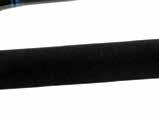



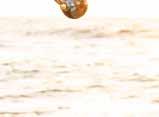





















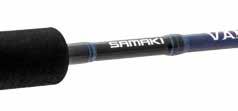






















FISHING & BOATING NEWS
WWW.HOOKEDUP.COM.AU 12 MARCH 2024 | ISSUE 142
STRESS FREE MARINE ANCHOR WINCHES
Engineered for adaptability, Stress Free anchor winches offer varied mounting options with an 8-way gearbox and motor assembly reset, ensuring a perfect fit for any anchor well. Swift, one-touch precision anchoring with Freefall technology minimizes drift, making anchoring effortless. The NG Freefall winches feature seamless rope and chain handling, while the premium Italian motor and double-anodized gearbox ensure durability. Crafted from 316 L grade marine stainless steel with a solid stainless steel drive shaft, these winches resist corrosion. Additional features include a 1400-watt motor, waterproof circuit breaker, and optional upgrades like the Pro-series casing and waterproof wireless remote. Backed by a 5-year warranty, our Stress-Free Anchor Winches promise reliability, convenience, and superior performance on the open waters.
stressfreemarine.com.au

D.Y.F.C ANNUAL TOURNAMENT
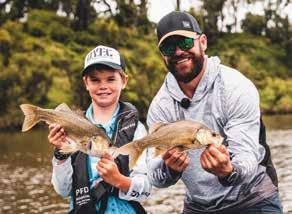
The event of the year for young anglers is back again in 2024, the D.Y.F.C Annual Tournament. An opportunity for young Aussie anglers to test their angling skills.
Daiwa’s annual event runs from 25th March to 25th May. An Australian wide, appbased tournament, the D.Y.F.C Annual Tournament is a multi-species event with over $7000 in prizes up for grabs. To enter all you need to do is sign up to D.Y.F.C ($10 for two years), enter the competition, head out on the water, catch some fish, take 2 x photos, then submit your catch into the D.Y.F.C Fishing App. It’s that simple. D.Y.F.C members and non-members will be able to jump online to the D.Y.F.C website to view the catches and see who’s leading the race on the live scoreboard and for the spoils and rewards of the prize pool. With 25 species categories on offer, plus a prize for Overall Winner and Overall Runner-Up there’s never been a better reason to grab a rod, grab your mum and dad and brother and sister and get out on the water.
daiwafishing.com.au
HAYABUSA KINGFISH SABIKI
If you’ve been fishing long enough, you would have at some stage experienced a larger fish strike the fish you’ve just hooked. It’s an exciting and adrenaline fuelled situation as at times you hook the bigger fish and sometimes you don’t. The team at Hayabusa have come up with a way to capitalise on this situation with the Super Strong Sabiki that is designed to catch kingfish. The idea is that you catch a bait such as a slimy or yakka and instead of retrieving them to place on another rig, you just leave them down and wait for a kingfish to come and strike. The rig features size 4 hooks and comes in a range of line sizes from 60lb through to 85lb.
vivafishing.com
HUK PURSUIT SWIM SHORTS
Elevate your fishing experience with the Huk Men’s Pursuit Volley Swim Shorts – the essential gear for your aquatic adventures. Crafted from a breathable and soft blend of polyester and stretchy spandex, these shorts offer a 4-way stretch for unmatched freedom of movement both in and out of the water. Featuring a 5.5” inseam, mesh liner for optimal airflow, and quick-drying material, these shorts are designed for your dips in the ocean, pool, or creek. Dive in with confidence and comfort, making the Huk Pursuit Volley Swim Shorts your go-to on water essential.
jmgillies.com.au


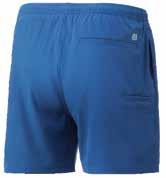
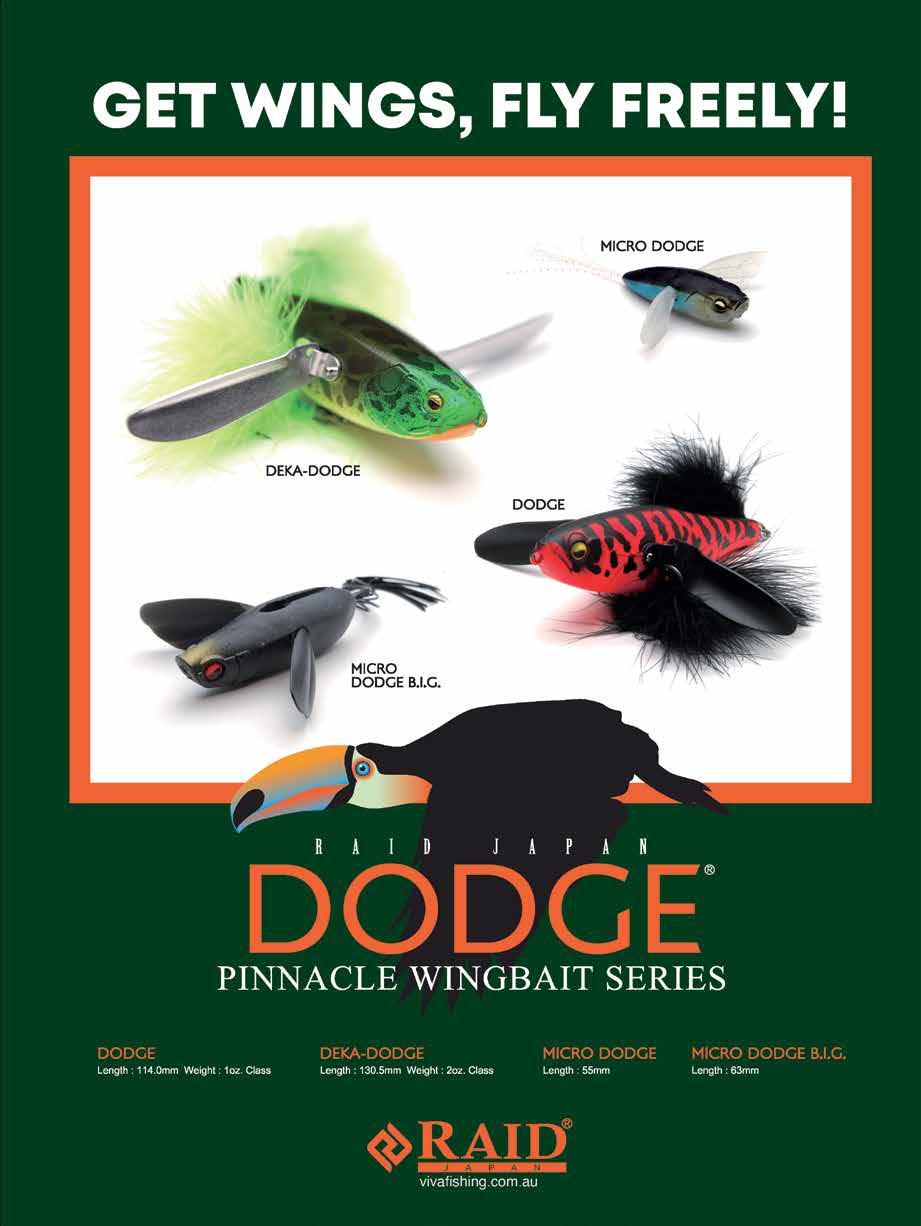
FISHING & BOATING NEWS
WWW.HOOKEDUP.COM.AU 14 MARCH 2024 | ISSUE 142
MERCURY JOYSTICK STEERING FOR SINGLE-ENGINE USE
Mercury Marine, has released introduced Mercury Joystick Steering for Single-Engine Vessels, compatible for use with the Mercury Verado family of V8, V10 and V12 outboard engines from 250 to 600hp. Enhanced by electric steering, Joystick Steering for Single-Engine Vessels rounds out Mercury’s suite of joystick systems. Joystick Steering for Single-Engine Vessels eliminates the need for boaters to use both hands to throttle, shift and steer during low-speed manoeuvres like docking. Not only is one-handed operation more convenient, but the precision control that the steering system provides will give users greater confidence in situations where manoeuvring a single outboard can be more challenging than a multi-engine configuration. The new single-engine joystick has a sleek design without any physical buttons. It allows for proportional forward and reverse movement and the twist function provides precise, intuitive steering. When Joystick Steering for Single-Engine Vessels is integrated with a compatible multifunction display (MFD) incorporating GPS and Mercury SmartCraft Connect, it also offers autopilot features. Available starting from April, 2024. mercurymarine.com.au


BAIT BREATH DEKAMIX

EDENCRAFT TO LAUNCH 255 FORMULA
Edencraft International will launch the 255 Formula this month. Building on the legacy of the Formula 233, a vessel with a 60year history known for exceptional performance and durability.
Meeting AMSA Survey Standards, it features cutting-edge composite materials, dual bait tanks, a reconfigured dash, upgraded cabin, and a new enclosed helm. It also features a 570L fuel tank, 24 degree deadrise and a dash that can accomodate three 19in displays. Choose from a range of 300hp to 800hp outboard power options. With extra deck space, a spacious fuel tank, and a well-appointed cabin, it allows for extended water adventures. The 255 Formula sets new benchmarks with features like a rear transom seat doubling as an esky, sliding side windows, and ample storage. Precision crafted using 5-axis CNC machining, it showcases Edencraft’s commitment to innovation and thoughtful design.
edencraft.com.au
Bait Breath, one of Japan’s leading manufacturers of soft baits is proud to introduce the Dekamix, a revolutionary lure that promises outstanding performance in both freshwater and saltwater environments. With its unique design and versatile features, this lure will present a new and unique profile to multiple river and estuarine species. The 4.5-inch size gives it outstanding presence in the water, making it an irresistible target for a variety of fish species. Featuring twin tails, this lure offers a lifelike and enticing movement that triggers the predatory instincts of fish. The ring-shaped legs on the body can be cut at the base and separated from the body, allowing anglers to customize the lure’s appeal based on the fishing conditions and target species. Whether you’re an avid angler or a beginner looking to enhance your fishing experience, Dekamix is the go-to lure for targeting flathead, yellow bellly bass, estuary perch, jacks and trout.
gladiatortackle.com.au




FISHING & BOATING NEWS WWW.HOOKEDUP.COM.AU 16 MARCH 2024 | ISSUE 142
Choosing the right hook can be the difference between success and failure. Black Magic hooks are made in Japan from high quality carbon steel and are chemically sharpened for ultimate strength and penetration. the best by test... Follow @blackmagictackle on Facebook and Instagram Caught a fish? Enter our Hall of Fame competition at www.blackmagictackle.com

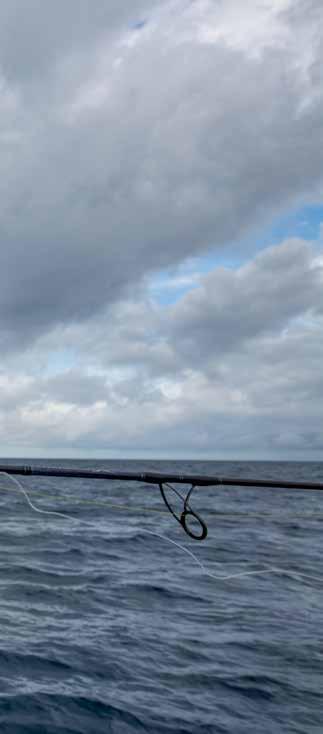
tactics on targeting these trophy fish on the jig and what helped me to achieve this success.
Going Heavy
Firstly, you need to gear up for targeting these large reef fish on the jig. Heavy, slow-pitch gear is acceptable for landing trophy 10kgplus reefies with something in the PE 3 to 5 range acceptable. However, I prefer to use a standard fast jigging rod of around PE 5 and 6ft long due to the large number of sharks found on the GBR. After being sharked on trophy fish way too many times, I do find the conventional slow-pitch rods/gear designed for Japanese and temperate waters a little too slow when fighting bigger fish.
This is a personal preference and if you feel you can muscle fish away from the sharks just as well with a slow-pitch rod by all means go ahead. I have my jigging combo spooled with 50lb braid and 100lb leader and I connect the two lines via an FG knot. I also prefer to jig with a spin reel and use 10000 size most of the time. Overheads are also great if you prefer to jig this way. Some of the large reef fish will also head for holes and bommies on the reef once hooked so the heavy gear helps you put the brakes on them and get them in before the sharks arrive.
Getting sharked isn’t only a matter of losing a great fish and your gear, it can also destroy spots. Once a shark has eaten your fish the commotion and blood in the water will often attract many more sharks and render this location done for the day. If you’ve been sharked once it often becomes impossible to land other fish from this area and I will simply move.
Jig Choice
There’s a crazy amount of jigs and styles now available and picking the right one can seem a tough task. You need a jig that has the weight to hit the bottom fast and it’s important you take both current and depth into consideration. You also want a jig that is responsive and has great action. After trying a massive range of jigs and styles I’ve finally come to the realisation my favourite jigs are oval-shaped slow-pitch jigs that have a lot of action on a medium-paced retrieve. The one that’s been extremely effective for me is the Samaki Ribcage (first reviewed way back in Hooked Up #107 on trumpeter, it has since gone on to catch everything – Ed).
These jigs get down fast, have a great action, are super-tough and – best of all – impossible to tangle. By hanging your assist hook or hooks from the top hook hanger and tying your line to this hanger, you have a tanglefree jig. Once you hang assists from the rear of the jig or swap to a sliding ball-style jig you run the risk of tangling. Tangles result in having to wind the jig up to untangle, or missed hook-ups and fewer fish in the boat. Having caught loads of trophy reef fish on the standard oval jigs, I now find myself always tying one on in most areas deeper than 30m. Picking the right weight jig for the depth and drift speed you are fishing is much more important. I had my dream session using a 60-gram jig in 45m of water on a very calm day with a slow drift speed. If I was fishing in 45m of water on a windy day with a fast drift speed, I would be jigging with an 80g jig. So be willing to adjust your jig weight depending on conditions and always make sure you are making good contact with the bottom when targeting bottom-dwelling species.
THREE DREAM DROPS
Words & Images: Colby
Lesko
Lately I’ve been focusing a lot of my fishing time on jigging for demersal species of the Great Barrier Reef. Lots of trials and tribulations have led to lots of learning, and after lots of effort recently I was lucky enough to finally land a trophy 10kg-plus red emperor on a jig. This only made me keener to explore more options when jigging for the reefies of the GBR.
After trying all the different styles of jigging, different climatic conditions, different tides and different bottom areas I was able to connect all the dots. This led me to having a session I’ll never forget – three dream drops in a row. I was lucky enough to catch an 80cmplus fingermark on the first drop followed by an 80cm-plus red emperor on the second drop and finally an 80cm-plus largemouth nannygai on the third drop. Three trophy fish on the jig in three drops in one session is something I will probably never do again but I’m OK with that! In this story I’ll explain my
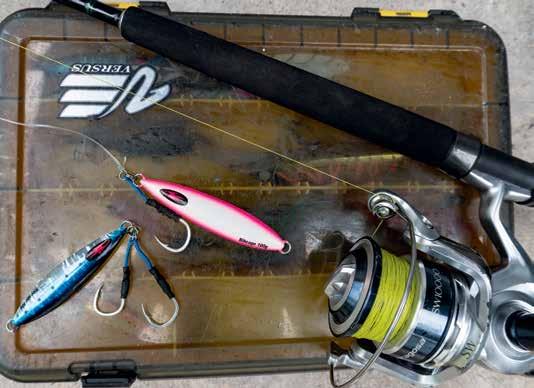
WWW.HOOKEDUP.COM.AU 19 MARCH 2024 | ISSUE 142
The author fishes heavy when slow pitching to get fish away from the sharks.
The Great Barrier Reef delivered a hat-trick of 80cm-plus trophy fish – fingermark, red emperor and nannygai.
WWW.HOOKEDUP.COM.AU 18 MARCH 2024 | ISSUE 142
A trophy red emperor was the second fish of the day.

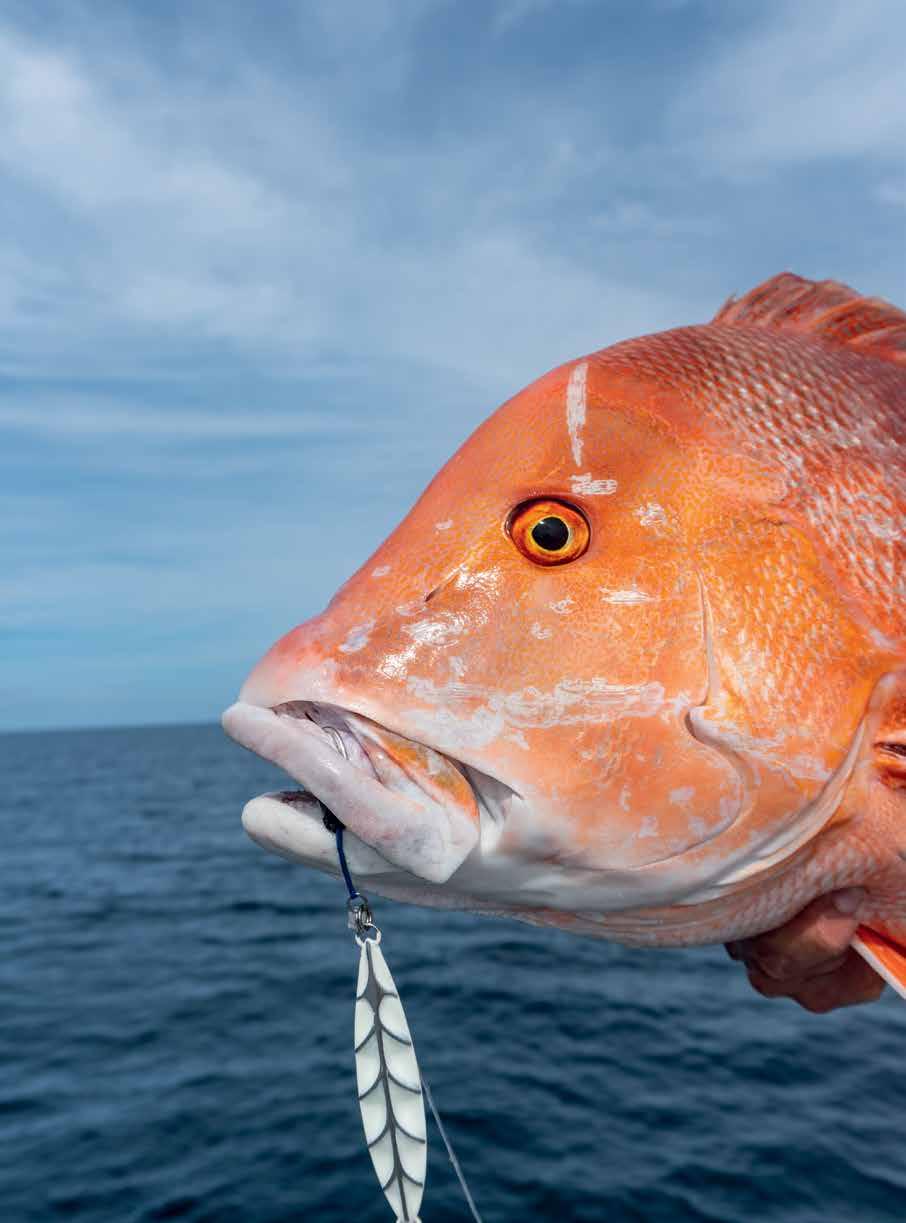
Picking a spot to drop can be the hardest part of jigging for big reef fish. In the past I have targeted areas just off the sides of reefs for mixed results but lately I’m only looking for ground out in the flat deep areas away from the reefs. Anywhere from 30m out to 70m deep is the best depth. I try to find isolated drop-offs, bommies or rubble patches out away from the reefs. These areas are guaranteed to get fished way less than areas around the reefs and often hold the best numbers of trophy-sized reef fish. Always keep a keen eye on the sounder when driving to and from the reef to find these spots. There are also some great charts and bathymetric overlay maps that will be great aids to helping you find these areas. Once you find an area it’s up to you and your sounder to do the rest and find an exact spot to drop on.
I TRY TO FIND ISOLATED DROP-OFFS, BOMMIES OR RUBBLE PATCHES OUT AWAY FROM THE REEFS .


You don’t need to find lots on the screen and often I will catch great fish just out of some fuzz or bait sitting on a rise or bump on the bottom. Reefies will often sit tight to the bottom so you mightn’t mark the big fish, but if the bait fish are there they will not be far away. You want to find drop-offs and edges that face into the tide or current as this will help hold the bait, so if you do find an isolated edge without bait, return on the change of tide and check it again.
For areas of large tides and current flow, try to jig around the change of tides. I prefer to plan my jigging sessions away from the moons as large tidal flows and currents seems to slow the bottom-fishing bite down and make it hard for the jigs to reach the bottom. I work my jigs at a slow pace with many rips and falls in the bottom 10m of water when targeting big reef fish.


the best by test... Follow @blackmagictackle on Facebook and Instagram Caught a fish? Enter our Hall of Fame competition at www.blackmagictackle.com
The author uses the Samaki Ribcage slow pitch jig in a variety of weights and colours.
WWW.HOOKEDUP.COM.AU 22 MARCH 2024 | ISSUE 142
Just a double like this would have any angler stoked.
Three Dream Drops
So, after putting together the perfect plan for a day on the water jigging reef fish I was dealt some great weather on a mid-moon with some smaller tides and it was game on. I had a runout tide so picked a drop-off where the tide would be pushing onto and hopefully holding bait. These areas were way out in the shipping channel away from the reefs in fairly flat bottom country. The edges only went from 47m of water up to 40m but, as hoped, were holding some bait nicely on the run-out tide.
The first drop of the day I simply dropped onto an edge in 45m that I had fished before and caught some nice fingermark snapper. Sure enough, first drop I hooked and landed the big fingermark on the 60g Ribcage jig, as it fluttered back to the bottom after a few jigs up. Fingermark of this size are an extremely old fish and suffer from barotrauma badly, so as the fish hit the surface it was dead. Thankfully, they are great eating.
Satisfied with this catch and not wanting to kill any more of these old fish, I decided to move on to another area before having the next drop. Next drop I picked a more rubble-looking patch a few kilometres away on my bathymetric map overlay and went and had a sound.
I had never fished this area before, and after finding a small rise and fall of about only three metres in 45m of water holding bait, I decided to have a drop. After a nice slow drift through the bait my jig was working the bottom 10m of water and as I went to jig up on my fifth or sixth rise and fall of the jig I was tight.
Something big had eaten the jig on the way back to the bottom and I was tight to a hardfighting trophy red emperor. After taking some photos of this fish I turned the boat around and lined up to do the same drift again.
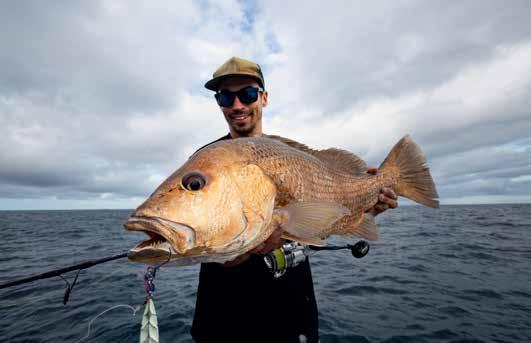


As I slowly sounded back up my drift line, I marked a big fish above the bait 5m off the bottom. I quickly pulled the boat out of gear and dropped the jig back overboard. As the jig reached the bottom it was instantly inhaled, and I set the hooks into another big reef fish.
As I battled the fish up from 40m down I joked to my mate, “Imagine if it’s a big nanny!” Sure enough, as it hit the surface I was grinning ear to ear as it was an 86cm largemouth nannygai.
I took some images of the fish and sat back for a moment to take it all in. Three incredible table fish of this size was more than enough, so we decided to head back in early and leave what was left for another day. This session just proved that with the right plan, favourable conditions, a good bite and a bit of luck, those dream sessions really are possible.
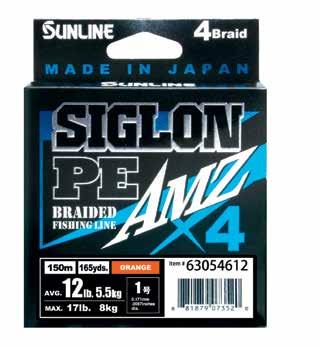
Siglon PE AMZ is an all-new braid and sets a new industry standard with its breakthrough Performance Sustainable Processing (PSP) across both its 4 strand and 8 strand braided lines. PSP is meticulously applied to each braided line strand. This ground-breaking technique serves as a game-changer, significantly extending the initial performance lifespan of the line while providing a slicker and smoother finsih that lasts.
Made in Japan.
www.ejtodd.com.au
Sunline’s all-new FC Rock is a 100% fluorocarbon leader material that features stability, abrasion resistance, clarity and the tenacity to endure in all fishing conditions. Improved abrasion resistance and tensile tenacity will keep you connected in the harshest underwater environments and on the toughest fish.
Made in Japan. Available in:
100m 2lb to 20lb.
70m 25lb & 30lb.
50m 40lb & 50lb


NEW! NEW!
Third drop.
First drop.
WWW.HOOKEDUP.COM.AU 24 MARCH 2024 | ISSUE 142
Second drop.
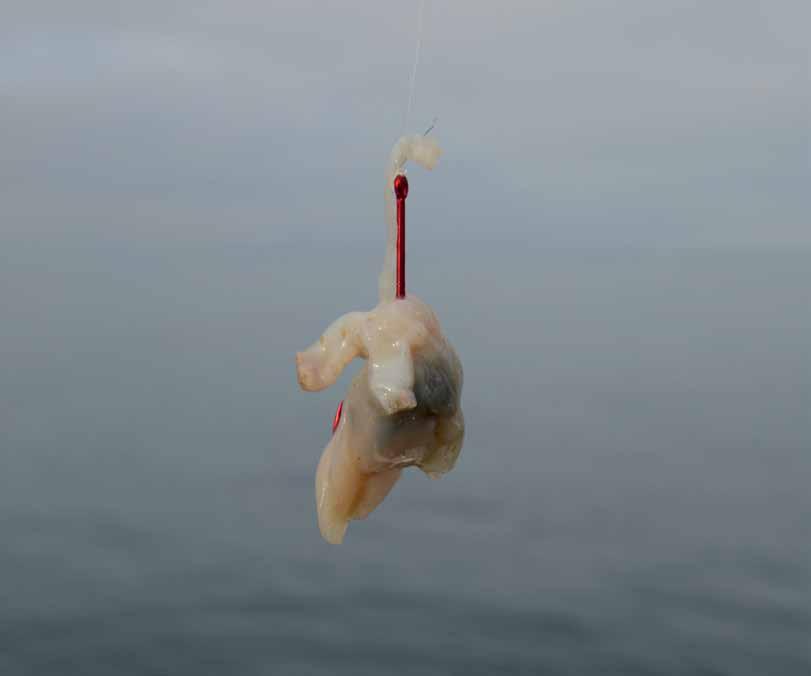
RIGGING FOR KING GEORGE
Words & Images: Adam Hewson
To novice bait fishermen, the pursuit of King George whiting and achieving your bag limit may seem straightforward. However, catching these sometimes elusive fish requires more than meets the eye. Beyond locating the right fishing spots, using the correct rig is a critical element in your success. In this guide, we’ll delve into the two most effective and straightforward rigs employed by seasoned anglers to catch whiting.
The Paternoster Rig
The paternoster rig stands out as the ultimate choice for King George whiting across various locations. This finessed and stealthy rig consistently outperforms others. Learning to tie a dropper loop is essential for crafting this rig. Paternoster rigs can be used in two ways – the sinker can sit at the bottom of the rig and the hook stays up high, or (as in the majority of cases for whiting) the sinker hangs off the dropper and the hook sits at the
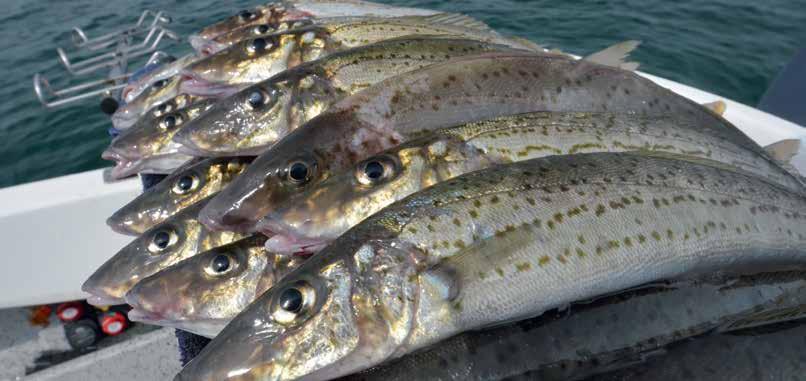
Breakdown of the Paternoster Rig
1. Tie the dropper loop and leave 1.5m of leader before attaching the hook.
2. Loop your bomb sinker off the dropper loop for easy adjustments.
3. Maintain a 1.5m distance between the hook and sinker to allow whiting to find the bait naturally.
4. Adapt sinker size to changes in depth and tide easily.
The recommended hook for this rig is a longshank size 6, making it easy to thread baits like pipi, mussel and squid.
Hold the rod, remain vigilant for bites, and strike promptly for successful catches.
Sinker choice should be based on depth and current and always use the lightest sinker possible. The aim is to keep your rig as finessed as possible.
bottom of the rig. The most important factor when tying this rig is to have the hook a good distance away from the sinker, as whiting can be spooked by the sinker. The best distance is 1.5m. Not only will this see your bait sitting a good distance away from the sinker, but the long leader will help the bait present naturally in the current.

WWW.HOOKEDUP.COM.AU 27 MARCH 2024 | ISSUE 142
WWW.HOOKEDUP.COM.AU 26 MARCH 2024 | ISSUE 142
Long shank hooks enable you to thread baits such as pippi, mussel, squid and cuttlefish with good hook exposure.
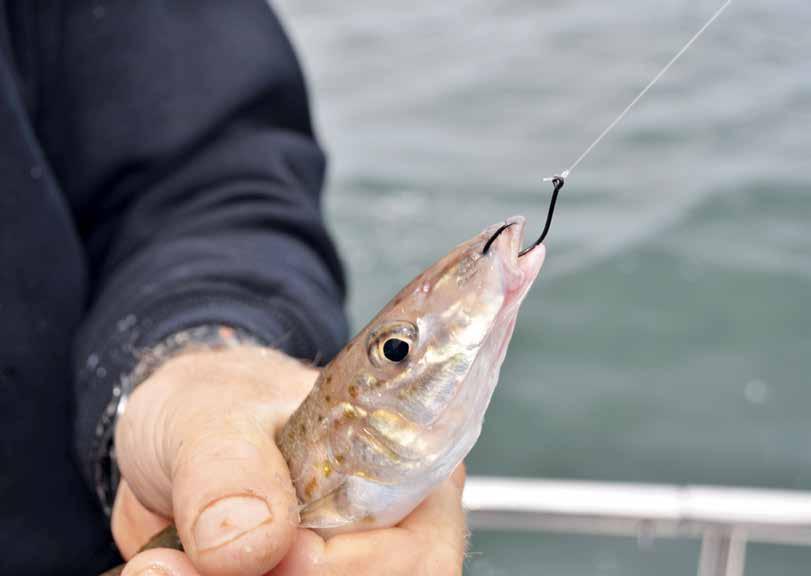
Fast Tide and Deep-Water Adaptation
For faster tides and deeper waters, modify the paternoster rig by swapping the hook and sinker positions and shortening the leader to 75cm. With the hook positioned above and the sinker below, this rig is suitable for dropping straight down below the boat. Opt for a small circle hook in size 6 to enable self-hooking in deeper and faster waters.
Personally, I like using pre-made rigs when using this rig such as Black Magic Whiting Snatchers and Hayabusa Whiting rigs as they feature flashers and beads that you can’t tie at home. Use this rig by placing it in the rod holder or holding onto the rod and gently lifting. Avoid striking too hard to prevent pulling the hook from the whiting’s mouth.
Attractants
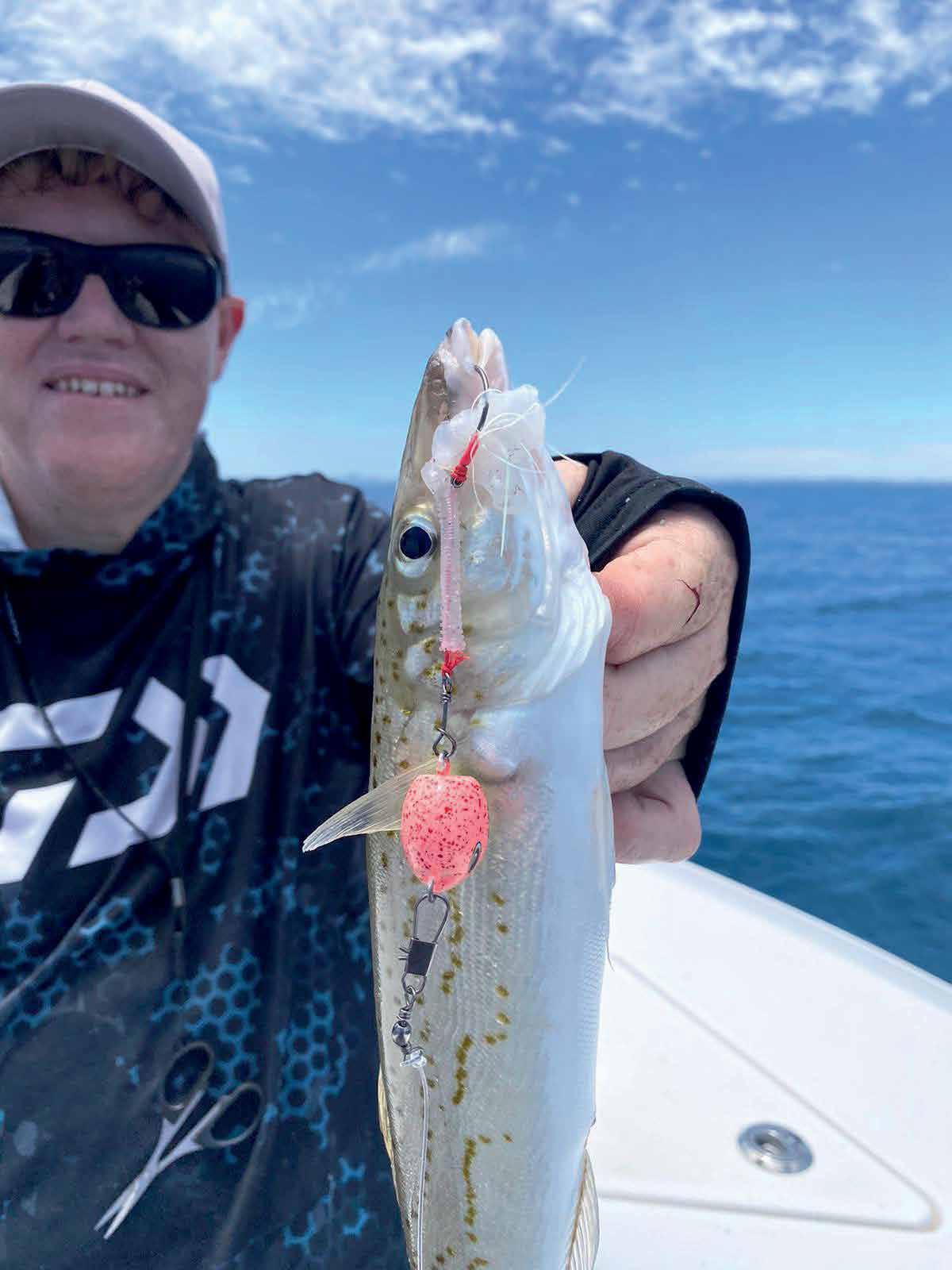
Enhance your rigs with small beads and thin red tubing, with red being the preferred colour for attracting whiting. Some anglers opt for tube only, others for beads, and some incorporate both. Adding beads or tube can be beneficial when whiting are less active, acting as visual attractants to draw attention to your bait. Keep it moderate – a few beads and a hook’s length of tube should suffice.
Rigs Matter
Selecting the right rig and hook significantly impacts your catch and strike rate. Dedicate time to mastering knots, and pre-tie rigs before your fishing expeditions to enhance your overall fishing experience, regardless of the species you’re targeting. This attention to detail will undoubtedly catch you more whiting.

SOMETHING VERY MICRO IS COMING
MEATS

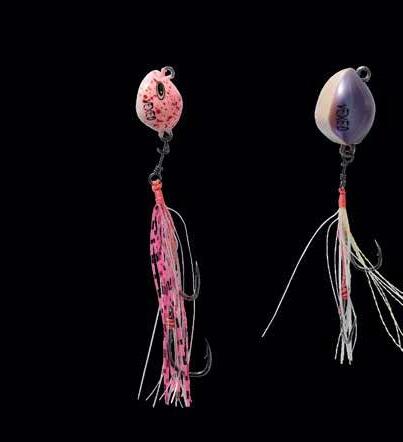

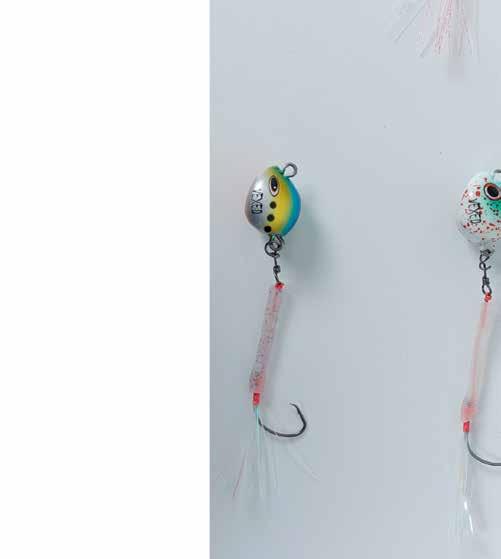


Based in Lonsdale SA, we have grown our premium winch & accessories business to serve local, national & international boat builders & owners.

With incredible drop speeds and controlled retrieval, our Drum Winches will have your anchor back on deck in no time at all.

We use the highest quality materials that comply with international standards, so you can have complete confidence in the strength of our products.
AVAILABLE IN 10 COLOURS BOTTOMMEATJUNIOR MICROMEAT BOTTOMWORM LONGSHANK BOTTOMWORMMUTSU GLOW UV FITTED WITH HOOKS www.stressfreemarine.com.au
MICRO
WWW.HOOKEDUP.COM.AU 28 MARCH 2024 | ISSUE 142
When fishing in deeper water or in faster current or if you just want to sit the rod in the holder, circle hooks are a great option.
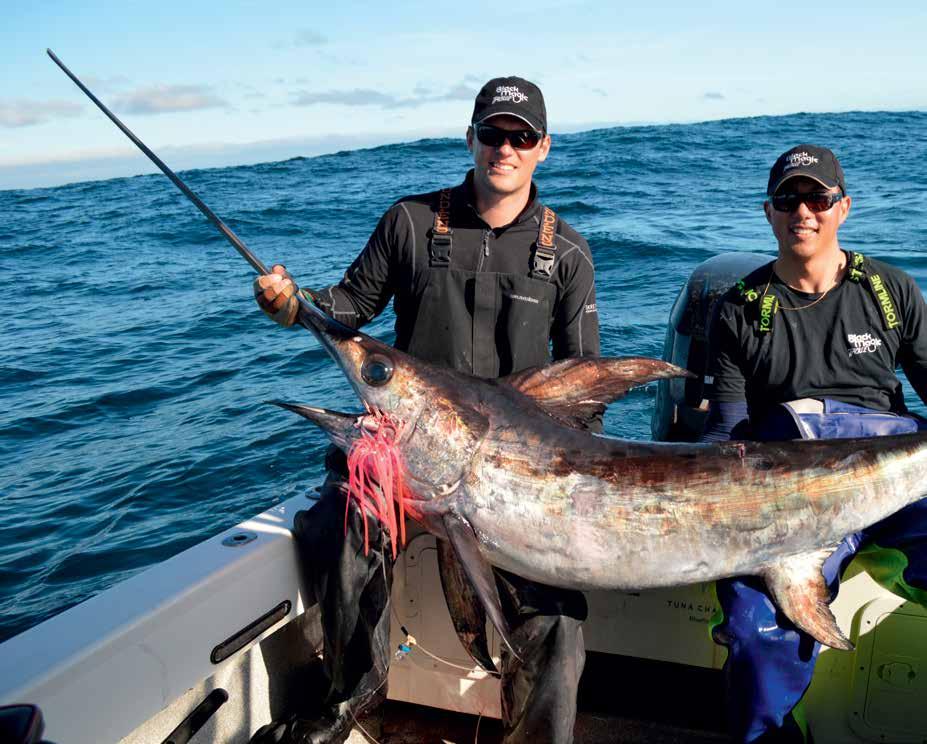

successfully (as well as a bit of luck). One big advantage when chasing swordfish is you only really need one outfit. However, it does help to have a second as a back-up if you get busted off, or something toothy bites the braid. Although some anglers will run two rods at a time while chasing swordfish, this also increases the risk of tangles. Ideally you need an overhead reel in the 50 to 80size class, and it helps if the reel has two speeds. The reel should consist primarily of braid (generally 80 to 130 pound will suffice), with a short topshot (100m or less) of monofilament of similar breaking strain. The rod can be either a straight or bent butt, but generally a bent butt is preferred given it fits in the gunwale rod holders easily and the rod tip sits horizontally, making bite detection easier. There are now many rods on the market which are specialised for swordfish (both fully rollered and standard guides).
From the monofilament topshot you should connect to a wind-on leader of 300 to 400 pound breaking strain. The set-up of the bait leader is where there can be a lot of variation, depending on who you ask. I use 400lb Black Magic Tackle Tough Trace for the leader, which holds up against the abrasive and sharp edge of the swordfish’s bill. You can either use single, double or a combination of J and circle hooks, which are either stitched or bridled into a bait of choice. Swordfish are not fussy and will take a range of baits, from squid to various whole fish or strips of fish belly. What is important is to take the time to stitch the bait up securely for three reasons. One, swordfish are messy eaters and will commonly slash at their prey first. Your bait needs to be robust enough to take a few hits initially, and still hold together in one piece to be consumed by the swordfish eventually. Number two, you may be dropping the bait anywhere from 350 to 600m deep, so the bait
HUNTING GLADIUS
Swordfish are one species that lives up to the hype – but you’ll need to be serious with your preparation
Words & Images: Jonah Yick
Fishing for swordfish is not for the fainthearted. Typically you are fishing in exposed offshore waters, a long steam is required to get out to appropriate grounds, you fish one rod at a time, and it usually involves a lot of waiting around. If you are lucky enough to hook a swordfish, they also have a common habit of breaking your heart by either throwing the hooks in the early stages of the fight, or at the end of a gruelling battle that could last for hours. The phrase “hours of boredom, minutes of mayhem” couldn’t ring truer when describing swordfish, but also makes it so much more rewarding when you finally manage to land one of these gladiators of the ocean.
Rigging up
If you aren’t put off by this, then it’s time to get rigged up for battle. Good preparation plays a huge part in targeting swordfish
needs to be attached securely to the hook to last the long drop through the water column. Lastly, there are plenty of other smaller fish down deep with sharp teeth that will take a liking to your bait. You need your bait to withstand these pickers as best as possible. The other thing that not only helps protect your bait but can also act as an attractant is putting a plastic lumo skirt over the top of it. The skirts to use are generally in the 12 to 15in range.
Additional lights will also help to attract swordfish to your baits, given they have big eyes and exceptional eyesight.
Although I prefer circle hooks, I know other ‘swordfishers’ who have had success with running J hooks. Rig most of your baits at home, so you aren’t wasting time on the water when you could have a bait soaking. I usually rig five baits at home beforehand then freeze them in separate bags so they are ready to go for the next swordfish trip.
The sacrificial sinker set-up is probably one of the most unique and important parts of the swordfish rig. The aim of the sinker is to get the bait down to the bottom in a fast and controlled manner, but then allow the bait to break away from the sinker, which results in the bait naturally wafting up the water column. Swordfish are a pelagic predator and will feed in all depths of the water column, but during the day they are generally inhabiting the first 100m off the bottom. Bricks, rocks and steel/iron bars all work well as weights, and the breakaway mechanism can either consist of light monofilament line or even a wire hook. Experiment with various lengths and breaking strains of line, as these can change depending on the sea conditions on the day.
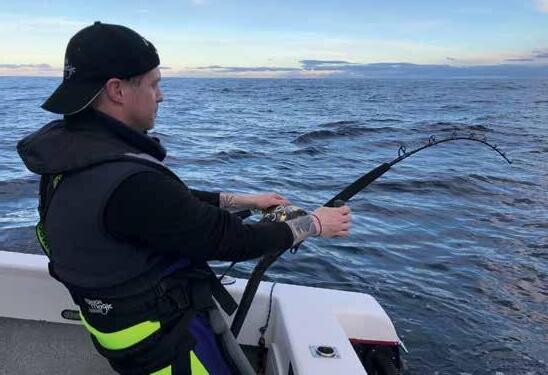
Once hooked up, it’s time to settle in for battle. . MARCH 2024 | ISSUE 142 WWW.HOOKEDUP.COM.AU 31
WWW.HOOKEDUP.COM.AU 30 MARCH 2024 | ISSUE 142
Broadbill swordfish are considered the pinnacle capture of gamefishing and with good reason.
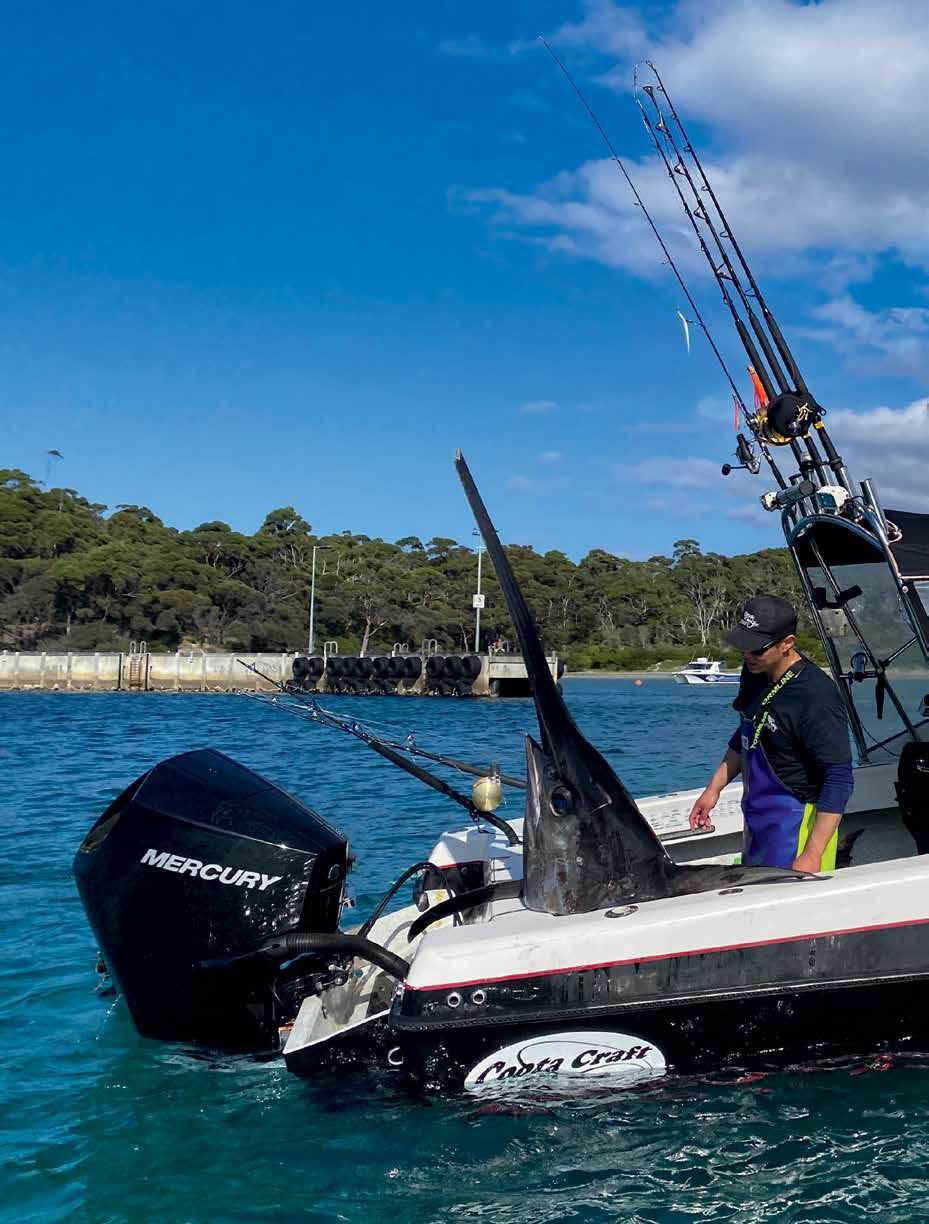
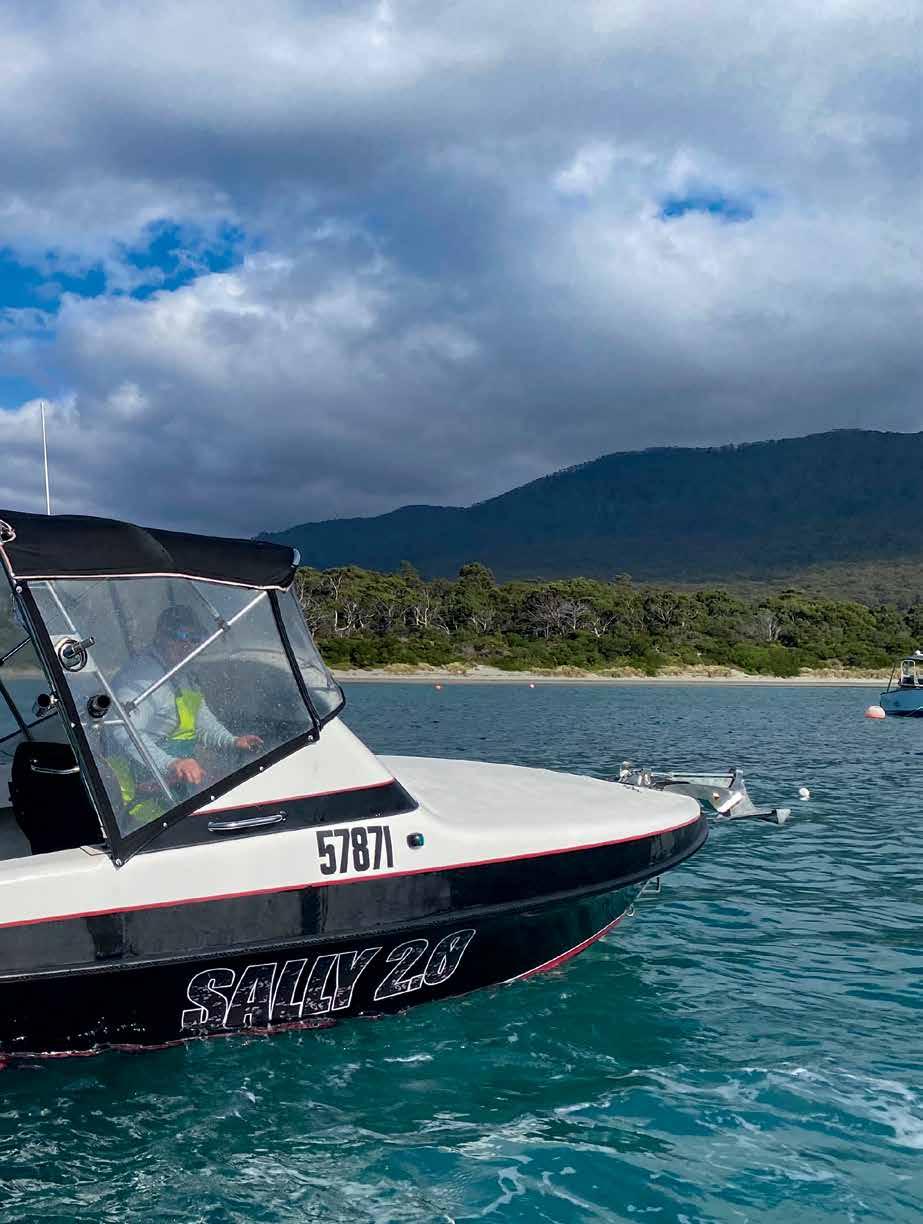
This gives new meaning to big fish and small boats!
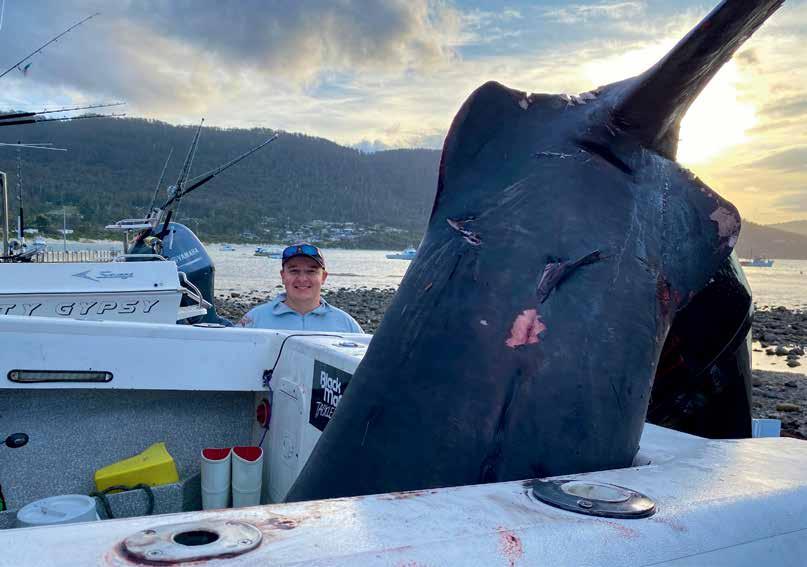
Finally, double and triple-check all your connections, leaders and topshots. If there is a scuff, imperfection or sign of wear, get rid of it and re-tie it. Swordfish demand respect, and if there is a weakness in your gear, they will find it.
Where And When
The two states with strongly established swordfish recreational fisheries are Tasmania and Victoria. In Tasmania, we are fortunate that the majority of runs out to the swordfish grounds (continental shelf edge) are relatively short. In some areas of the state, the shelf edge can be as close as 20km, while unfortunately for the Victorian game fishers, they are running anywhere from 80 to 140km. Peak swordfish season generally correlates with the latter half of the East Australian Current, as it is either slowing or receding back up the east coast. This is usually from April through to June, depending on whether you are fishing in southern or northern Tasmania, or Victoria. Although swordfish have been caught outside these times, this period gives you the best chance of hooking up a gladiator.
When fishing over the continental shelf it can be overwhelming initially. In order to gain insight into where to start fishing, it is
important to acquire a bathymetric chart app, either on your phone or your GPS plotter. With this alone you can start to have a few trial drops, even without reading the bottom. However, having a sounder that is suitable for these depths is a big advantage, as it allows you to mark bait and fish. Generally, a 1kW transducer is recommended when fishing over the continental shelf, though I run a 600w transducer, which is still more than sufficient at reading the bottom and finding bait accumulations.
Before you head out fishing, it is worth spending some time on dry land to work out exactly where you plan to drop. Do this by inspecting your bathymetric chart app and start looking for areas of interest on the continental shelf. Swordfish are generally in areas where there is an accumulation of their prey, which can either be squid or demersal bottom fish such as blue grenadier, frostfish and gemfish. Look for the area of ground closest to the boat ramp you plan to launch from, then start to inspect the contour lines. Look for kinks and sharp bends in the lines on the shelf slope, as well as canyons (multiple circles), which could indicate baitholding structure which in turn could attract swordfish. Areas where the contour lines squeeze tightly indicates a ledge of some sort, which could also be an area where bait or



bottom fish may hold on. Any depths from 350 to 600m are worth investigating, so mark any suitable structure in this depth range. When you are starting out, it doesn’t hurt to bring an electric reel to prospect on the new areas you are fishing. As long as you are catching bottom fish in the area, you are in the game.
Swordfish Strategy
Once you head out to the shelf and find some likely looking bottom, have a look at your depth sounder. Bait or demersal fish will appear either as a ‘furry’ layer over the bottom, or you may see a thick band in midwater or just above the bottom, which can be anywhere from 50 to 300m thick. This layer is known as the deep scattering layer or the scatter layer and is an accumulation of various organisms, which can include lanternfish, squid, hydrozoans and pelagic tunicates. All these organisms are sought-after prey for deep sea bottom fish, which in turn means it’s a likely spot to find a swordfish. However, this does not mean you are guaranteed to hook up, as the swordfish may not be present, or are simply not willing to take a bait. At times it is worth having a prospective drop even if there are no signs of life on the sounder, but the contours on the chart look promising.







Our Sword Skirts are a unique new design. They are very different from any other skirt on the market, with a tapered tube, 50mm diameter and overall length of 300mm. Our Sword Skirts are extremely thick, heavy duty and made to last for as long as possible against the scavengers of the deep. They are identical to our lumo range in colour, except they run an even greater lumo count to help attract the gladiators of the deep. There is no need to use glow sticks with these skirts once properly charged. Available in two sizes: 50 x 300mm & 40 x 270mm.






PENETRATES 2X BETTER Competitors’ Hooks TROKAR
TK4
LANCET CIRCLE HOOK PLATINUM BLACK, WELDED EYE
7/0 - 8/0 - 9/0 meridiantackle.com.au sales@meridiantackle.com.au Meridian Tackle meridiantackle
WITH THE
TROKAR
Non-Offset, Medium Wire, Available in
SWORD SKIRTS
WWW.HOOKEDUP.COM.AU 34 MARCH 2024 | ISSUE 142
Power plant!
Once you have found a likely spot and the bait has been dropped, wait until it hits the bottom then break the bait away from the sinker. The waiting game now starts. Never take your eyes off the rod tip. The bite of a swordfish can be even more subtle than a bottom fish, so you need to be ready to react and set the hook. Some anglers like to tease the swordfish into taking the bait by winding the bait up the minute they see a bite; others like to feed the bait back in free spool to allow it to swallow it, while some will simply wait until the rod loads up and the fish hooks itself under medium drag pressure.
There is no right or wrong way of doing it, and you need to experiment to work out what works best for the situation. A swordfish bite isn’t necessarily a ‘bite’ per se, but can be any abnormal movement in the rod tip or line such as slack in the line when it should pull tight as the boat comes up the swell, or a bend in the rod when the boat drops down a wave, indicating additional weight or pressure. Any of these signs should not be ignored, and you should react by winding up tight to it, to work out what is going on.
If the current or wind is strong, it will be even harder to see bites, and it becomes important to continuously back up on the bait to stay in contact. By doing this it is possible to fish for swords even in average conditions, in wind speeds up to 15 knots. However, it will not be overly comfortable. I generally time each drift for approximately 45 minutes to an hour. After this I will wind up and either re-do the drift in the same area or move to a new spot. This is essentially the fundamental process of targeting swordfish, watching a single rod tip in open waters, winding it up after a short time, and redoing it all over again.





When (or if) you are lucky enough to get a bite from a swordfish, stay calm and don’t panic. Once the hook has been set, nine times out of ten the swordfish will begin racing up to the surface. As a result, you will notice slack in the line and it is important to wind as hard as you can to keep the tension on the line and avoid the hook falling out.
Upon reaching the surface, they either stay just under the surface of the water or will begin jumping or breaching. They will then usually power back down to settle at 50 to 100m. From here on it is a battle of sheer will power and strength, as to who will be first to give in, the angler or the fish.
Although it can take many hours (or potentially seasons) to hook and land one of these amazing fish, I can assure you it will be 100% worth it. This is one species that lives up to all the hype.





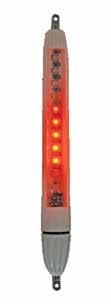










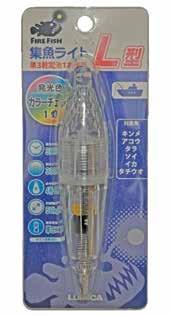



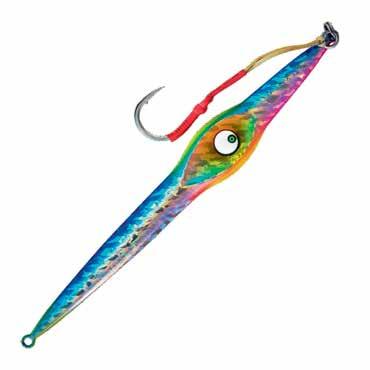
MARCH 2024 | ISSUE 142 WWW.HOOKEDUP.COM.AU 37 SPECIALIST DEEPWATER DROP LIGHTS COVERING ALL DEPTHS FROM 300 to 1200mt ! www.jurofishing.com www.jmgillies.com.au www.glowbite.com.au trade enquiries: sales@glowbite.com.au “ THE LURE WITH THE FLASHING LIGHT ” “ THE LURE WITH THE FLASHING LIGHT ” L GHTN NG ROD L GHTN NG ROD Introducing the
The author takes great care harvesting his capture for zero waste and best table quality.
WWW.HOOKEDUP.COM.AU 36 MARCH 2024 | ISSUE 142
Every broadbill is a memorable capture.
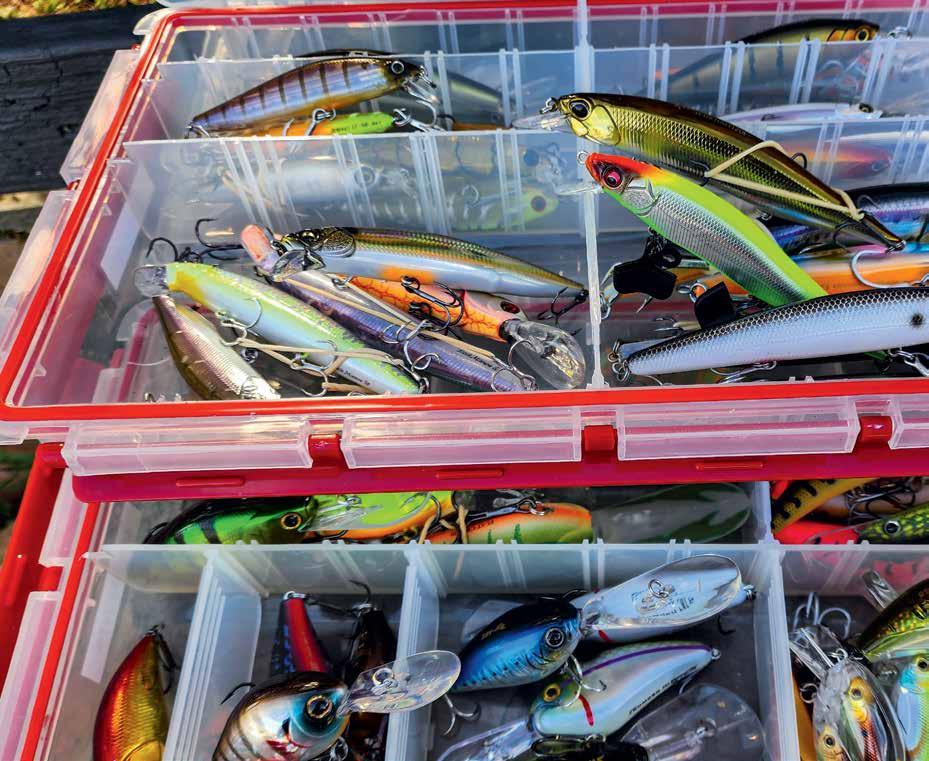
KNOW YOUR LURES PART 1
Before splashing out on what you think is going to land you a heap of fish, make sure you know exactly how that lure will present to the fish.
Words: Kosta Linardos Images: A Full Crew
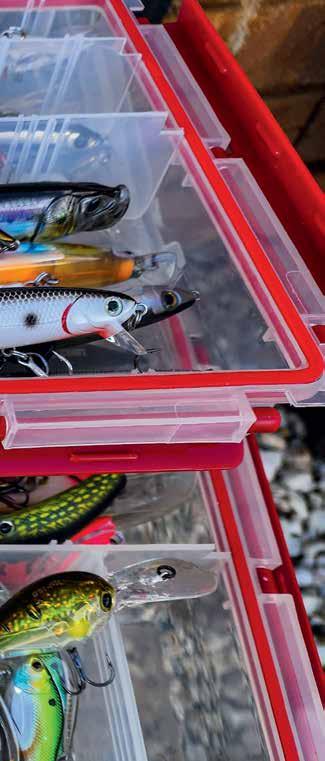
Most anglers start fishing with bait - it’s the gateway drug that leads many to a life addicted to buying and collecting lures. This is a life that I wouldn’t change for anything; lures are a huge part of my life, as they are for many anglers. They fill an angler with joy. It’s the prospect of how a lure might change the game and how a new lure might achieve something that everything else in your tackle box won’t.
To the outsider or the inexperienced, they may seem like merely a collection, but to the educated angler they’re not. There are so many small facets of a lure that could change your day from fishless to a memorable session. The main aspects of a lure are size, colour, buoyancy, action and sonic attributes. Within these categories there are more finite facets of a lure. As an example, suspending lures all suspend differently – some suspend for longer than others before they float. Then there are small variances in the same basic
colour schemes that anglers will swear buy. Once you take all this into account, you start to see why seasoned anglers own so many lures. This generally comes from the harder days fishing where you may be left wanting a lure that’s a little smaller, dives a little deeper, or is a little greener in colour. This then sends you on a search for the perfect lure, for that species, in that location. The options may seem infinite, but time on the water, talking with your mates and the guys at your local tackle store will help narrow the field.
But the important factors you need to focus on when starting out is knowing the difference between the lure types and what they have been designed to do once you get them in the water. Knowing the difference between a crankbait and a jerkbait, or a swimbait and a glidebait, is of most importance.
If you’re reading this and you’re a complete novice (and maybe if you’re not) the thing you really need to focus on when making a lure choice is what prey you’re trying to imitate and what depth you’re targeting the fish. In a world where you’re most likely being bombarded by social media posts of a fish with a lure hanging from its mouth without a lot of context, you’re not getting a lot to go off and it will most likely lead to the wrong purchase. One species in different locations –and even in different parts of the same system – will respond dramatically differently to the same lure.
It’s apparent that anglers are confused between all the various lures. As an example, while they may look similar, a swimbait, wakebait and a glidebait have vastly different actions and applications.
And there are poppers that chug and some that spurt – they’re both poppers but they have very different actions. You then have sinking stickbaits and floating stickbaits and you’ll need these different buoyancies for varying conditions, and you’ll work them both differently. So, the angler buying one or the other without understanding the difference may be quite disappointed in their purchase once they hit the water.
Now, the point of this piece isn’t about being pedantic, it’s about anglers understanding before buying how a lure should behave when you retrieve it. With a limited understanding of what it does, you may be choosing the wrong style of lure for your intended species or application, and therefore wasting your money and catching fewer fish.
It’s imperative to not confuse shape with lure style. There is no such lure type as a minnow, shad, deep-diver or hard-body, yet I have heard anglers use these terms countless times – “they’re going for minnow-style lures”, or “I got him on a deep-diver”. Each style of lure can have varying shapes and dive depth – it is its action, buoyancy and response to rod and reel movement that defines it; shape, colour and size are important but somewhat secondary.
So read on for Part 1 of our Know Your Lures series as we identify some very common styles of lure or ‘bait’ that are used in estuaries, rivers and lakes. In this first part we’ve covered the most used lures and some of the most misunderstood lures.
Next month in Part 2 we’ll be focusing on offshore lures for casting and trolling, we’ll then do soft plastics in Part 3 and Part 4 will be freshwater lures that we haven’t covered in Part 1.

The humble jerkbait is still one of the most effective lure styles that exists today. MARCH 2024 | ISSUE 142 WWW.HOOKEDUP.COM.AU 39
WWW.HOOKEDUP.COM.AU 38 MARCH 2024 | ISSUE 142
The amount of lures on the market can be bewildering, but having a good understanding of what each lure does can narrow down your choices.
Jerkbaits
One of the original and most underrated, undervalued and misunderstood lures to ever grace the tackle boxes of any Australian fisherman is the jerkbait. You’ve all seen and most probably fished with a jerkbait. A jerkbait can be defined by the position of its bib. The bib sticks out from under the lure, as opposed to straight out from where the fish’s mouth would open. In some models the bib is fitted a fair way back and some very close up the front. This bib position dramatically changes its action and the way you work it.
Due to the position of the bib and the intended action they are generally shallowdiving lures and mostly come in long and slender, or ‘minnow-style’, shapes. As the name suggests, most jerkbaits are intended to be retrieved with jerks and twitches of the rod. This gives them an action that resembles a prey that is injured and about to die. Jerkbaits dart, dive, kick and the good ones roll and shimmer. When working a jerkbait I often try to work it like a bait that struggles and kicks to move away from prey or towards a safe place but then is so exhausted it gives up and either sinks, suspends or floats, depending on the jerkbait’s buoyancy, and this is where it often is hit. Performing this action takes a bit of getting used to as it requires coordination between your rod and reel hand.
You don’t just slowly wind a jerkbait – with some of them you can, but they can do so much more. The slight bit of practice required to work a jerkbait is why many anglers don’t favour them, but they are highly effective for many species. They are best fished with high-speed reels for more control and faster retrieval of slack line.
If you’re not into jerkbaiting or don’t have any, finish this article then drive to your local tackle store and buy some. Whether it’s





jewfish, barra, trout, bass, bream or whatever, there is a jerkbait out there that’s waiting to get smashed.
Crankbaits
If one lure category could be called the most popular and had more models under its name than any other it would be the crankbait. There are without doubt more crankbaits in the world than any other lure type. The crankbait greatly differs from the jerkbait as you can just ‘crank’ it in with the reel with no rod movement and it will have (or should have) an action that fish find appealing. Slight jerks and twitches can be placed in your retrieve, but the speed that you crank and the length of your pause is what will fool your target species. Knowing your lure and the optimal speed and length of pause for your target species is what separates good anglers from great anglers.



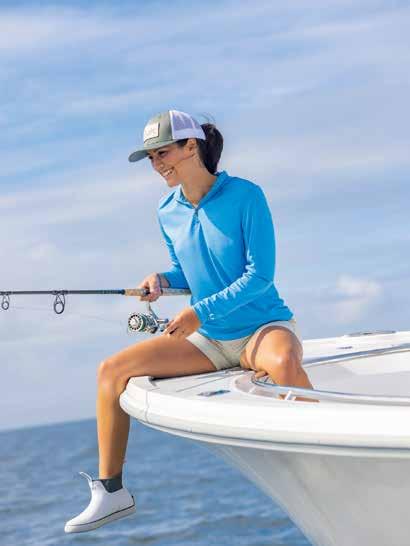


BOATS AUSTRALIA Call your local Sportsman dealer now for a water test VIC - R&M Marine: 03 5986 7788 NSW - Hunts Marine: 02 9546 1324 Sth East Qld - Stones Corner Marine 07 3397 9766 Nth Qld - Reef Marine 07 4957 3521 SA/NT/WA - Seabow Marine 03 5986 7788 www.sportsmanboatsaustralia.au Designed and manufactured in Australia www.anchorright.com.au | 03 5968 5014 Right Anchor Austr A li A Pty td TWO WORLD LEADING ANCHOR DESIGNS The SARCA EXCEL and SUPER SARCA are certified type approved Super High Holding Power. SUPER SARCA SARCA EXCEL www.jmgillies.com.au MARCH 2024 | ISSUE 142 WWW.HOOKEDUP.COM.AU 41
Crankbaits come in a variety of sizes, shapes and colours and are very angler friendly.
New tech such as Shimano’s Flashboost has taken jerkbaits to a new level.
WWW.HOOKEDUP.COM.AU 40 MARCH 2024 | ISSUE 142
The Daiwa Double Clutch- a jerkbait/crankbait hybrid and one of the greatest lures ever made.
Crankbaits range in size from tiny 30mm bream lures through to monsters that are trolled for barra and cod. They can dive to extreme depths or run quite shallow. They can have every type of shape imaginable and can be trolled or retrieved. They all generally share the wobble and tail kick action we all know so well but each one differs slightly and these ever-so-slight differences are what make some lures famous and some end up in bargain bins. Crankbaits have an action that imitates a wounded prey as opposed to that ‘I’m just about to die’ action of a jerkbait. They have strong vibration, visual presence and they’re highly effective on every species of fish.
Swimbaits
Lures should be viewed like classical painting styles: you have Impressionism, where you can see the scene, you know what it is, but there is nothing ultra-detailed or realistic about the way it has been painted; and you have Realism, highly detailed, where the artist tries his best to replicate a scene. A skirted game lure is like Impressionism; it really looks nothing like a fish, but does a great impression of one. A Cranka Crab, however is the ultimate example of Realism; it looks very close to the real thing. In the realm of ‘jointed’ lures, the action of a swimbait is much closer to Realism. They are designed to swim like a healthy fish when simply slowrolled. Some of them have an amazingly life-like ‘swimming’ action; however, it’s up to the angler to incorporate fast burns of the reel, jerks and twitches to make that fish look sick or injured. To achieve this life-like action, multiple joins are required and these are the defining features of a swimbait. Swimbaits in most cases don’t have a bib and can sink at varying speeds or float. They can vary in size from very small to ridiculously large and heavy. In their larger sizes they can be put into the bigbait category and weigh in excess

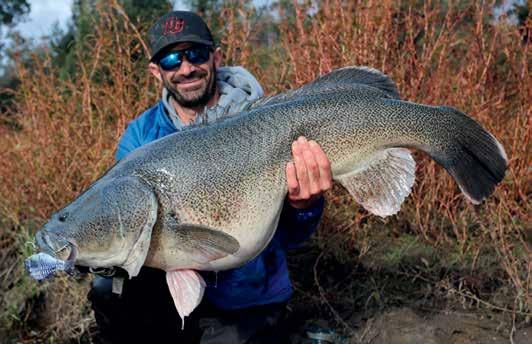

of 10oz. Swimbaits can be made from hard or soft plastic or wood but are always defined by that life-like ‘swimming’ action.
Glidebaits
Glidebaits are commonly confused with swimbaits, and you can be forgiven for being confused as most Australian distributors of these American and Japanese creations label them this way.
They are highly effective, but they have a very different action from a swimbait. While they are a jointed lure, a glidebait has only the one join and this changes the action dramatically. If you test one out or just, you may be quite shocked at how they swim. They don’t have that same snake-like swimming action of a swimbait. They glide and move in a left-toright action.

NO GIMMICKS NO FALSE PROMISES JUST TOUGH AUSSIE TRAILERS THE BEST BED FOR YOUR BOAT!
sales.savagetrailers@gmail.com (03) 9708 2970 26 RUTHERFORD RD, SEAFORD VICTORIA
The Megabass Spine X is a swimbait with a bib. A new and very cool design.
Smaller swimbaits such as the Bantam BT Bait have proved to be extremely effective.
WWW.HOOKEDUP.COM.AU 42 MARCH 2024 | ISSUE 142
Big swimbaits were established on the Murray cod scene.
They have that realistic shape and profile of a baitfish or a trout, but they’re designed to imitate a fish that is about to keel over and die. Just with the turns of your reel handle you can present a glidebait very well and there is hot debate between anglers as to how much rod action should be employed.
Most glidebaits are big lures, and they’re designed for getting a strike from those big fish that might not look twice at your smaller offering. From the research I’ve done it seems that once American bass anglers started using big glidebaits, their captures not only increased in frequency, but the size of the fish they were catching increased dramatically. It seems that many anglers here in Australia are finding the same results on cod and barra. Bigbait rods are necessary to cast these heavy lures out and low-profile baitcast reels are best used to get that side-to-side action.


in Japan.


MOST GLIDEBAITS ARE BIG LURES, AND THEY’RE DESIGNED FOR GETTING A STRIKE FROM THOSE BIG FISH.

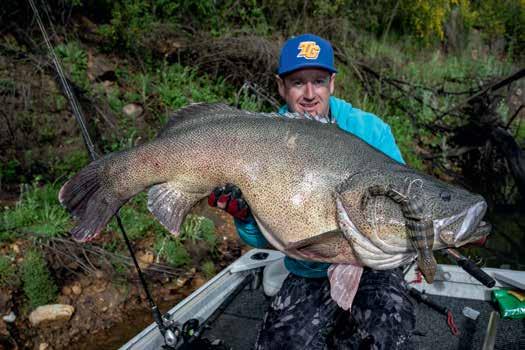

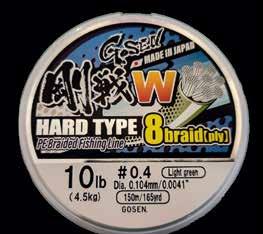


What sets Gosen apart is their commitment to quality from start to finish. These exceptional braided lines are meticulously manufactured in Gosen’s own facility in Japan. This ensures that every step of the production process, from selecting the finest raw materials to weaving and testing, is executed with the utmost care and expertise.
Gosen braided lines are designed to meet the rigorous demands of anglers who seek uncompromising strength, sensitivity, and casting performance. The result is a series of braids that deliver a seamless fusion of technology and tradition, offering anglers an edge in their pursuit of trophy captures.

The Wakebait
Wakebaits are another lure getting thrown into the swimbait category, and again, they can be classed as a bigbait as some of them are huge. Much like a swimbait, some wakebaits do have the snaky swimming action, but not all are jointed. A wakebait can be a surface lure, where it swims on top or sub-surface where it’s designed to swim just under the surface. You’ll easily be able to tell a wakebait from a swimbait by its defining feature, which is a bib. The bib is most commonly situated under the lure like a jerkbait. When you work a wakebait it creates a wake on the surface and this attracts fish. Wakebaits are perfect for fishing areas that are very snaggy or in shallow waters; best of all it’s visual and you see the strike. So, if it’s jointed and has a bib, it’s a wakebait 98% of the time, not a swimbait. Don’t discount wakebaits that aren’t jointed – they are excellent lures that have amazing sub-surface action with a simple slow roll.
We are giving away $1000 worth of Insalt fishing gear every month for the biggest or best capture on an Insalt Finesse Explorer or Estuary Explorer rod voted by our followers.
To enter your catch just post your photo and tag us on Facebook In-Salt Fishing and/or Instagram @insalt_fishing and use the hashtag #insaltnoodlerod
Please note: Video evidence will be required if you are the winner! We don’t sell Insalt rods to the public so check your local tackle store for our products.
Terms and conditions
1. You can enter as many times as you like but once you enter a catch it can not be entered again in another month.
2. Only these rods can be used in the comp Insalt finesse explorer 5’6 spin, 6’6 spin and 5’6 overhead or our previous model Estuary Explorer.
3. Insalt will provide nominations at the end of each month. The winner is voted by the public.
4. The prize is voted on the biggest or best catch.
5. Anglers can use line above the recommended rod 1-3kg rating but it’s not recommended and will forfeit warranties
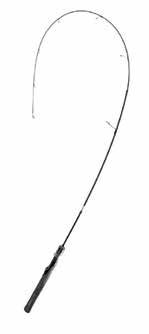
www.insaltlures.com.au













MARCH 2024 | ISSUE 142 WWW.HOOKEDUP.COM.AU 45
Gladiator Tackle | sales@gladiatortackle.com.au (02) 8958 3556 www.gladiatortackle.com.au
The world’s finest quality braided lines. Designed and made
1-2kg $1000 Noodle Rod Competition EYEWEAR Features - Scratch resistant TAC lenses - UV4000 Protection - Polarized CAT 3 - Anti-salt coating - Frame is 100% Recycled Plastic - 10% profit goes to charity Angler Pro Polarised Kidz The INSALT Angler Pro glasses have robust, scratch-resistant lenses with anti-salt coating, ideal for serious saltwater fishing. They feature frames made from recycled plastic and UV 400 Polarised Lenses with added anti-salt protection. Plus, 10% of the profits support charity, so you can look good and do good with INSALT Angler Pro. The perfect glasses for reducing glare, improving visual clarity and protecting your eyes from the sun’s damaging rays with their slick wrap around design. Great for spotting fish, playing sport, or just drinking coffee and looking cool. Kidz Tough Polarised sunnies: certified CAT 3 polarised lenses for UV protection. They shield young eyes from the strong Australian sun, and they’re durable. Plus, 10% of profits support charity, so they’re not just stylish but also charitable. www.insalteyewear.com.au
Wakebaits cane be jointed or one piece and come in a crazy range of sizes, shapes and colours.
Glidebaits come in a range of sizes and designs and are effective on a host of species.
WWW.HOOKEDUP.COM.AU 44 MARCH 2024 | ISSUE 142
The Gan Craft Jointed Claw is the lure that turned Australia on to glidebaits.
Lipless Crankbaits & Blades
Often both referred to as vibes due to their vibrating action, the lipless crankbait and the blade are quite different. Lipless crankbaits are sometimes referred to as “hardbody vibes” or “jackalls” due to the popularity of the Jackall TN60. They feature strong vibration just with a simple lift of the rod but can be worked straight up and down, with twitches and small lifts to great effect. The lipless crankbait has been around for decades, first fashioned from wood and then ABS hard plastic and featuring rattles. Jackall then designed the Transam- a soft plastic lipless crankbait now known as “soft vibes” that took Northern Australia by storm with anglers targeting barramundi, threadfin salmon and mangrove jack.
Like all successful designs it went on to be one of the most copied lures in the country with other companies refining it, adding different tails and larger colour ranges. These are a great lure for getting down to where the fish are and presenting a lure with strong action that offers you a lot of control to where it sits in the water column. In the south hard body lipless crankbaits are most commonly used when targeting golden perch and have taken their fair share of big Murray cod as by-catch.
Then there is the blade. Generally smaller in size and made from pressed metal. These were at one time one of the most popular bream lures on the market. The Evergreen Little Max was one of, if not the first metal vibe and then almost every tackle company had their version of a metal blade at some point.
They feature extremely strong vibration and are a great lure to use in winter when fish are schooled and holding deep.

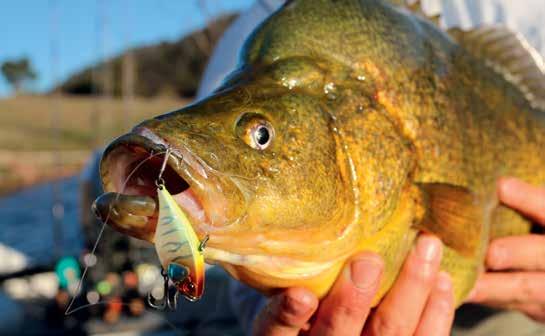
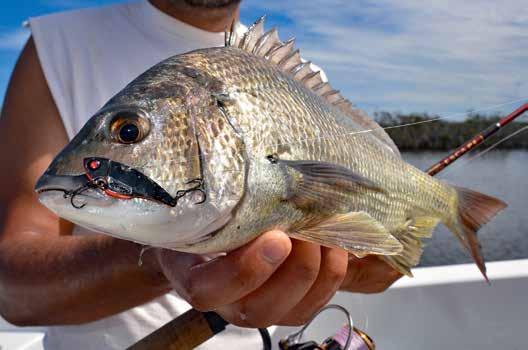
Blades aren’t as popular as what they once were but they’re still a highly effective lure.
They have a reputation of being a boring lure to use but their effectiveness cannot be denied. The biggest issue anglers face with vibrating lures is they are easily prone to snags due to their relatively heavy weight and twin treble hooks.
Know Your Lures
Pretty colours, highly detailed shapes, cool packets, effective marketing campaigns and hype can have a more dramatic effect on lure sales than its actual performance.
So as anglers who want to be buying the best product that catches us fish consistently, we need to wise up. You need to have a keen understanding of lure type, their intended use, how they perform, and when and how to use them. This will help you make better-informed purchasing decisions and you can block out any hype and become a better angler.

A boat designed with the fisherman in mind to take you places you have only dreamed about...;
sales.savagetrailers@gmail.com (03) 9708 2970 26 RUTHERFORD RD, SEAFORD VICTORIA
TOUGH AUSSIE TRAILERS THE BEST BED FOR YOUR BOAT! SOUTHPORT, TASMANIA
JUST
A traditional lipless crankbait. A popular choice for anglers targeting golden perch.
WWW.HOOKEDUP.COM.AU 46 MARCH 2024 | ISSUE 142
Soft vibes are extermely popular for northern species such as barra, jacks and threadfin.



FOR A LIMITED TIME ONLY mercurymarine.com.au *Terms and Conditions Apply. SAVE $2,800 UP TO ON 115, 150, V6 200 & V6 225HP RANGE UNRIVALLED UNMATCHED RELIABILITY PERFORMANCE

























































































































































































































































